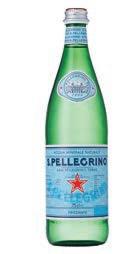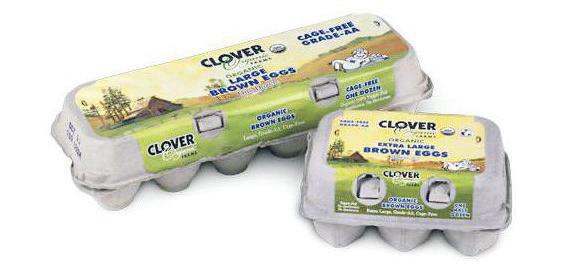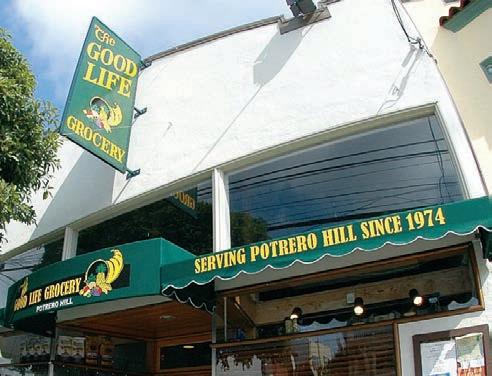

City Imposes Fee for Hill Property Owner to Access His Home
BY MICHAEL IACUESSAIt started as a simple home im provement project. For 35 years, Robert Hines had a driveway and a garage, but no curb cut. Pulling his automobile onto his property meant the car muffler would scrape against the pavement. When Hines finally got around to pulling a permit to construct the curb cut in 2013, he stirred up mu nicipal matters he’d never anticipated.
In 2014, the San Francisco Depart ment of Public Works informed Hines that the first 14.5 feet of his front yard was owned by the City, and that to access his property he’d be assessed an annual $120 fee. “It was a shock to us that it wasn’t our property,” bemoaned Hines, who owns 2211 25th Street with his partner, John Seemann. “Any rea sonable person would assume from the sidewalk in would be your property.”
Hines began writing letters - lots of them - to the San Francisco Board of Supervisors, District 10 Supervisor Malia Cohen, the Assessment Appeals Board and various other City agencies. Over two years he’s had no response from any of them.
“I’m just the little guy and they don’t care,” he reasoned. “The big picture is developers, ballparks.”
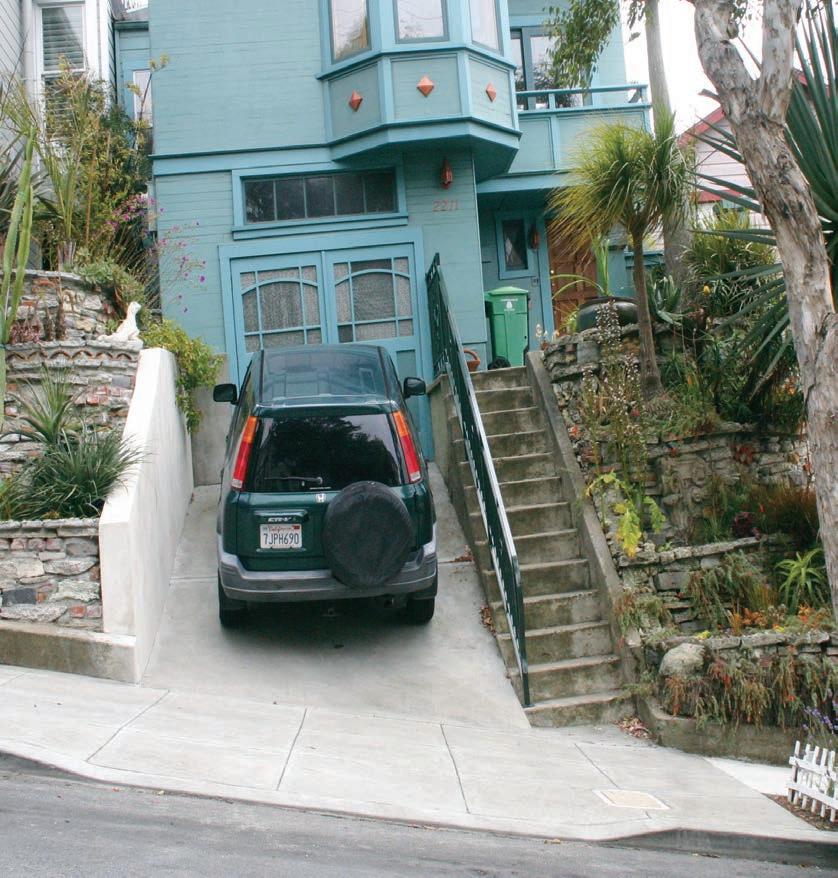
The fee, levied for what’s called a “minor sidewalk encroachment,” stems from an ordinance passed by the Board of Supervisors in 2005. Any permit pulled after August of that year involving a public right of way is subject to
the law, explained Carlos Jennings, a junior analyst with the Bureau of Street Use and Mapping. Anyone with a driveway built before that date doesn’t have to pay the charge. “The justification is that you are removing private space use; public parking,”
Jennings said.“Sort of renting the curb from the City is one way to look at it.”
Nonetheless, Jennings thought it was odd for so much of Hines’ yard to be City-owned. So did Paragon
Sex Workers Want Funds for East Bay Rape Crisis Centers Cut
BY JESSICA ZIMMERErotic Service Providers Legal, Education and Research Project (ESPLERP), a San Francisco-based nonprofit that advocates for the rights of sex workers, wants to reduce the amount of public sector and philanthropic dollars that flow to rape crisis centers, domestic violence shelters, and anti- prostitution and sex trafficking organizations.
“They’re just providing antiprostitution counseling,” said Maxine Doogan, ESPLERP president. “They’re not offering other services.”
According to Doogan, the entities should be deploying grant funds to provide tangible solutions to oppressed women, such as mental health counseling and stable housing. Doogan asserted that many providers abuse their power, claiming she’s heard of sexual assault victims being threatened with prosecution in juvenile and adult courts if they choose not to receive services.
Doogan said the failure of the complex of entities catering to women in sexual crises is closely intertwined with California laws that criminalize sex work. She believes that if sex

work was decriminalized, rape crisis centers and other such organizations would receive less funding and greater scrutiny of the services they provide.
Last year, ESPLERP filed a complaint, ESPLERP v. Gascón, against the State of California that challenged the constitutionality of laws criminalizing sex work. The U.S. District Court of the Northern District of California dismissed the suit. Last spring ESPLER appealed the case to the U.S. Court of Appeals

Still No Consistent Government Response to Homeless Camps
BY CHRIS BLOCK AND STEVEN J. MOSSThe City and County estimates that there are roughly 100 encampments – two or more people living without a structured home, typically in tents – and 700 campers at any one time in San Francisco. However, based on a survey of state and local government officials, including with the California Department of Transportation, Caltrain, and the Mayor’s Office of Housing Opportunity, Partnership & Engagement, there doesn’t appear to be a consistent approach to addressing makeshift camps.
Encampments are removed principally at the discretion of the agency on whose land they are located, often in response to pressure from nearby property owners. While public officials indicated that campers are supposed to be given notice of their impending eviction, offered shelter, with their belongings safely, if temporarily, stored, these practices aren’t systematically followed by state or local agencies.
Recently, Lawyers Committee for Civil Rights, American Civil Liberties Union of Northern California, and the WilmerHale law firm sent a letter to the City demanding that it “…put an immediate moratorium on the practice of confiscating and destroying homeless individuals’ belongings, to allow time for the City to develop and implement a new policy that conforms with wellestablished law.”
The demand was prompted by several high-profile encampment sweeps, particularly one that occurred last February on Division Street. According to the letter, “it was only after the sweep was conducted that DPH issued an “Abatement Order to Vacate” when the encampment on Division Street
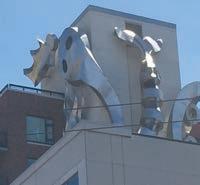 AUGUST 2016
FEE page 3
SEX WORKERS page 9
HOMELESS page 3
AUGUST 2016
FEE page 3
SEX WORKERS page 9
HOMELESS page 3
Mediators
BY STEVEN J. MOSSDonald Trump’s vanquishing of a football team’s worth of Republican Party presidential candidates has prompted intense reflection on how it happened, much of which lands on the same question: can democracy be trusted to produce competent political candidates?
One perspective gaining traction in the shout-o-sphere is that the collapse of mediating forces – backroom dealmakers; caucuses rather than primaries; a conscripted, instead of volunteer, military; media channeling viewers to three stations and the one that doesn’t come in clearly – directly exposed politics to a populace unburdened with the wisdom fostered by a more curated procedure. That, in turn, produced a major party nominee who is best known for his scowl, inflated hair and ego, and saying things that sound like what might emerge from a conversation between Archie Bunker and a 1990s-era Howard Stern.
Whether Trump would be a worse president than Herbert Hoover or George W. Bush is hopefully an empirical question that won’t be tested. In that respect, it may never be clear whether this election cycle’s process produced an inferior outcome than one that’s more managed, though a Hillary Clinton victory may provide some indication. Regardless, there’s mixed evidence about Americans’ capability of making great decisions about anything.
On the not-so-capable-of-making good choices side of the ledger, more than two-thirds of American adults are overweight; in excess of one-third are obese. As an adult American, I can attest to the pleasures of being plump, or at least the attractions of the inputs, which include salty, fatty, snacks and binging on Scandal. And for many Americans carrying excess pounds isn’t so much chosen as genetic destiny. Still, being heavy causes all kinds of negatives, including cutting life spans by upwards of three years.
It could be that Americans are making a solid decision to be big. More likely, we’re not engaging in a thoughtful choice at all, just slipping into the seductions of sofa surfing. Intriguingly, the portion of Americans who are x or xx-large neatly matches the more than two-thirds of Americans who chose not to participate in this year’s presidential primaries. Nonvoters and the overweight aren’t necessarily the same group of people, but they may be acting in like fashion, and from similar motivations, when it comes to the body/politic.
As with being overweight, the consequences of voter apathy and inaction can be unpleasant, but it doesn’t necessarily say anything bad about democracy, other than things would likely be different if more people engaged in it.
It’s difficult to identify a single indicator of smart decisions Americans have made. Tobacco use is down, a healthy choice, but that may largely be the result of concerted efforts to increase the costs of its consumption. We elected Barack Obama, and Jerry Brown; that turned out pretty well. And, matching our apathy and appetites, two-thirds of households give to charity, which could be considered a wise, or at least compassionate, thing to do.
Perhaps, though, the wrong question is being asked. The answer to whether democracy can be trusted to produce competent political candidates is “sometimes,” which prompts the follow-up query of what can be done to improve the chances that it’ll do so. The list is long: better public education; more economic opportunities, particularly on the lower rungs of the income ladder; a less money-saturated election process.
Democracy also requires some level of trust to work well. Trump has exposed Americans distaste for one another, as well as an even more disconcerting self-loathing. “If I were running “The View,” I’d fire Rosie O’Donnell. I mean, I’d look her right in that fat, ugly, face of hers, I’d say “Rosie, you’re fired,” he said. If Rosie O’Donnell is “fat” and “ugly,” so too are most Americans; it’s not hard to imagine Trumpists wildly cheering this “honest” statement, and then looking around with furtive eyes and shoving their hands in their pockets. It might be time to forgive our fellow would-be voters, and ourselves, for who we are, and move on to who we want to be.

SHORT CUTS
Shot
San Franciscan Rayshawn Larue, 48, was gunned down last month on Potrero Hill’s South Slope. Larue was shot and killed while standing between two cars parked along Dakota Street, a half-block from 23rd Street in the Potrero Terrace public housing complex. Neighbors rushed to help the victim; others called 911. Paramedics and police got to the scene a short time later and pronounced Larue dead. No suspect has been identified. The killing was the 29th of the year in the City….San Franciscans Jonathan Limu , 20, and Manu Pomele, 19, were arrested last month and booked on suspicion of robbery, assault with a deadly weapon, firearms-related charges, attempted carjacking, and conspiracy, police said. The pair was linked to a number of summer incidents that occurred in Bayview and Potrero Hill. In one, a 16-yearold boy was robbed of his and his sister’s phone on Burrows Street. The teens were playing the augmented reality game “Pokémon Go” when one of the suspects took their phones and ran to what appeared to be a silver coupe, where the other suspect served as getaway driver. The victim wasn’t injured. Then, on 23rd and Dakota streets, the duo demanded money from a 19-year-old. After going through his pockets and finding nothing of value, they punched the victim multiple times on the head and stole his belongings, including a pair of roller blades. While officers were taking down the robbery report at 23rd Street they heard gunshots nearby, and saw a silver Pontiac drive by. They stopped the vehicle at 20th and Tennessee streets, believing the occupants fired the shots. Later, investigators determined that the Pontiac passengers were being targeted by the gunshots, and connected the incident to Limu and Pomele. At Vermont and Mariposa streets, the men robbed a 58-year-old man of his wallet while he sat in his car around 4 a.m., police said. They ordered him to give them the vehicle, but he
drove away. Pomele was arrested at Wisconsin and Madera streets with several rounds of pistol ammunition in his pocket after officers responded to a well-being check. He’s being held without bail at San Francisco County Jail. Limu was arrested in front of the Hall of Justice, and is being held on $325,000 bail.
Quit
Last month, a Superior Court of California - County of San Francisco judge affirmed the City’s environmental review and approval process for the Golden State Warriors’ $1 billion, 18,000-seat event center and mixeduse development. The plaintiff, Mission Bay Alliance, has petitioned for a reversal of the decision by the California Court of Appeal . The ruling followed on the heels of another loss for the Alliance, departure of the group’s strategic and public relations consultant, Singer & Associates “We quit,” Sam Singer said, adding that the decision was prompted by “strategic differences.” The Alliance is a loose coalition of University of California, San Francisco benefactors — including Chiron Corporation founder Bill Rutter and former UCSF administrator Bruce Spaulding — as well as current and former UCSF Medical Center at Mission Bay faculty and nurses. The long-range plan for the arena site should be controlled by UCSF, the Alliance argues, to accommodate future growth of the decade-old Mission Bay campus. The Alliance is also suing UCSF in Alameda County Superior Court, claiming that UCSF Chancellor Sam Hawgood wasn’t authorized to negotiate a traffic mitigation agreement with the Warriors and City officials. That case — centering on traffic jams that could occur around Warriors games, especially events that overlap with San Francisco Giants competitions at AT&T Park — probably won’t to be decided for months, and isn’t likely to impact the Warriors’ construction schedule.



realtor Tim Johnson, who hasn’t come across a similar situation in 11 years as an agent. Realtor Mary Lace, who has sold homes on Potrero Hill for Sotheby’s since 1980, had heard of cases in which the City owned sizable chunks of land from the sidewalk in, but said it was unusual.
Upon seeing a photograph of Hines’ property on Google Maps, San Francisco municipal planner Tina Chang recognized it as triggering section 132 of the Planning Code. “Usually a house is not set back so far,” she said, noting the distance of Hines’ home to the street. The code, which would take a seminar in municipal law to fully comprehend, requires setbacks to be equal or the average of the two adjacent homes. In order to ensure that occurs as much as possible the City can claim up to 15 feet from the sidewalk for public use.
According to Chang, such situations are more common on up-sloping lots, because homes on those locations may need to be built along less customary lines. In fact, when he purchased the land Hines had to stabilize a sinking embankment to preserve the house, the instability probably being the reason the structure was built further from the street. Part of that embankment is what’s deemed public property now, and what prompted Hines’ confusion.
When the fee was explained to him by DPW two years ago Hines couldn’t
HOMELESS from Front Page
was removed.” A View reporter observing the recent removal of an encampment under the Cesar Chavez overpass received an ambivalent response from a Caltrans representative about whether notice had been given prior to that ejection.
City officials and homeless advocates agree that there’s a long waiting list for shelter beds. And, according to information provided by the City to District 8 Supervisor Scott Wiener, just two new permanent housing projects for the homeless have been created over the past year: The Baldwin Hotel, with 186 units, and The Henry Hotel, with 121 spots. The City is searching for another 200 units to master lease.
The Dogwatch Neighborhood Association (DNA) is working with the City on a plan to open a Navigation Center at the end of 25th Street, which would add modest shelter capacity over its expected three year lifespan. Key elements could include improved security covering the five blocks surrounding the facility, a midnight to 6 a.m. “lockdown,” ongoing Dogpatch resident involvement in center oversight, and promotion of work assignments for center occupants, focusing on street greening and maintenance, including needle cleanup, coordinated with the Green Benefit District. Leading up to the opening of the Navigation Center this fall, encampments will be removed from the area – particularly along Tennessee between 22nd
and 23rd, Iowa between 22nd and 23rd, and the Islais Creek tent city –by the San Francisco Police Department, Department of Public Works, and Homeless Outreach Team. Plan elements will be discussed at a DNA meeting on August 9, 7 p.m., at 654 Minnesota Street.
In response to continued chaos associated with homeless camps and government’s response to them, three legislative efforts have been launched to create a systematic encampment policy. District 11 Supervisor John Avalos’ proposed homeless encampment policy, which is being reviewed by the City Attorney, is based on an Indianapolis ordinance. It’d require, among other things, that sidewalks be free from obstructions and comply with the American Disabilities Act, cleaning of areas where homeless people are sleeping occur outside the hours between 10 p.m. to 7 a.m., and that a camp of more than 30 people in a 150-foot radius trigger a City responsibility to provide adequate bathroom and garbage services.
“John’s goal isn’t to legalize tents,” said legislative aide, Jeremy Pollock. “It’s to make sure we have a responsible, humane, and constitutional way for addressing encampments, and to minimize their impacts on neighborhoods while the City works on relocation.” Despite repeated attempts to get an update on the status of the proposed legislation the View received no response from the Supervisor or his office.
In June, District 2 Supervisor Mark Farrell submitted to the San
Francisco Department of Elections, with support from Wiener, District 4 Supervisor Katy Tang, and District 10 Supervisor Malia Cohen, his “Housing Not Tents” initiative, which will appear on the November ballot. The measure aims to move homeless individuals out of encampments and into housing. “It is not compassionate to allow human beings to live in tents on our streets; it is both dangerous and unhealthy,” said Farrell. “The answer to homelessness is housing, not tents. The City of Saint Francis needs to do everything in our power to get the homeless into housing and out of these encampments.”
Housing Not Tents requires 24-hour noticing, and mandates that shelter or housing be offered to individuals residing in an encampment before they’re removed or that they accept Homeward Bound, a City service that provides paid transportation to a destination outside San Francisco that’s connected to housing. Under the measure, it’d become a crime for individuals to stay in their tents after they’ve been noticed, punishable with fines.
District 3 Supervisor Aaron Peskin proposes a 72-hour eviction notice, and to require the City identify alternatives, such as shelter, exit housing or permanent affordable housing, before removing a camp. These exits would be guaranteed within 24 hours, and a plan for campers to transition to long-term housing would have to be developed within 30 days.
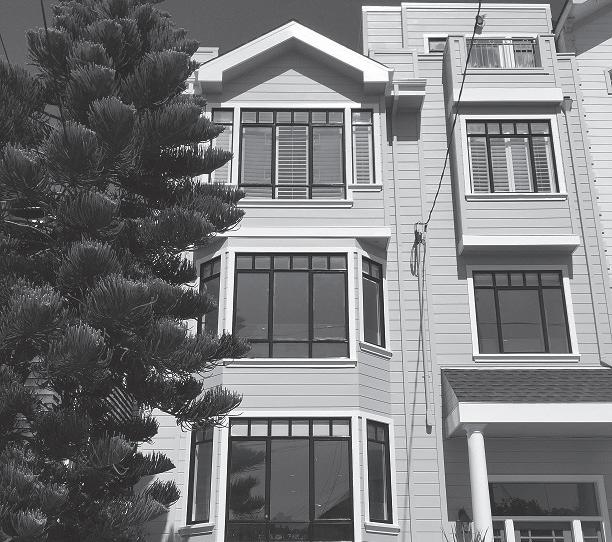



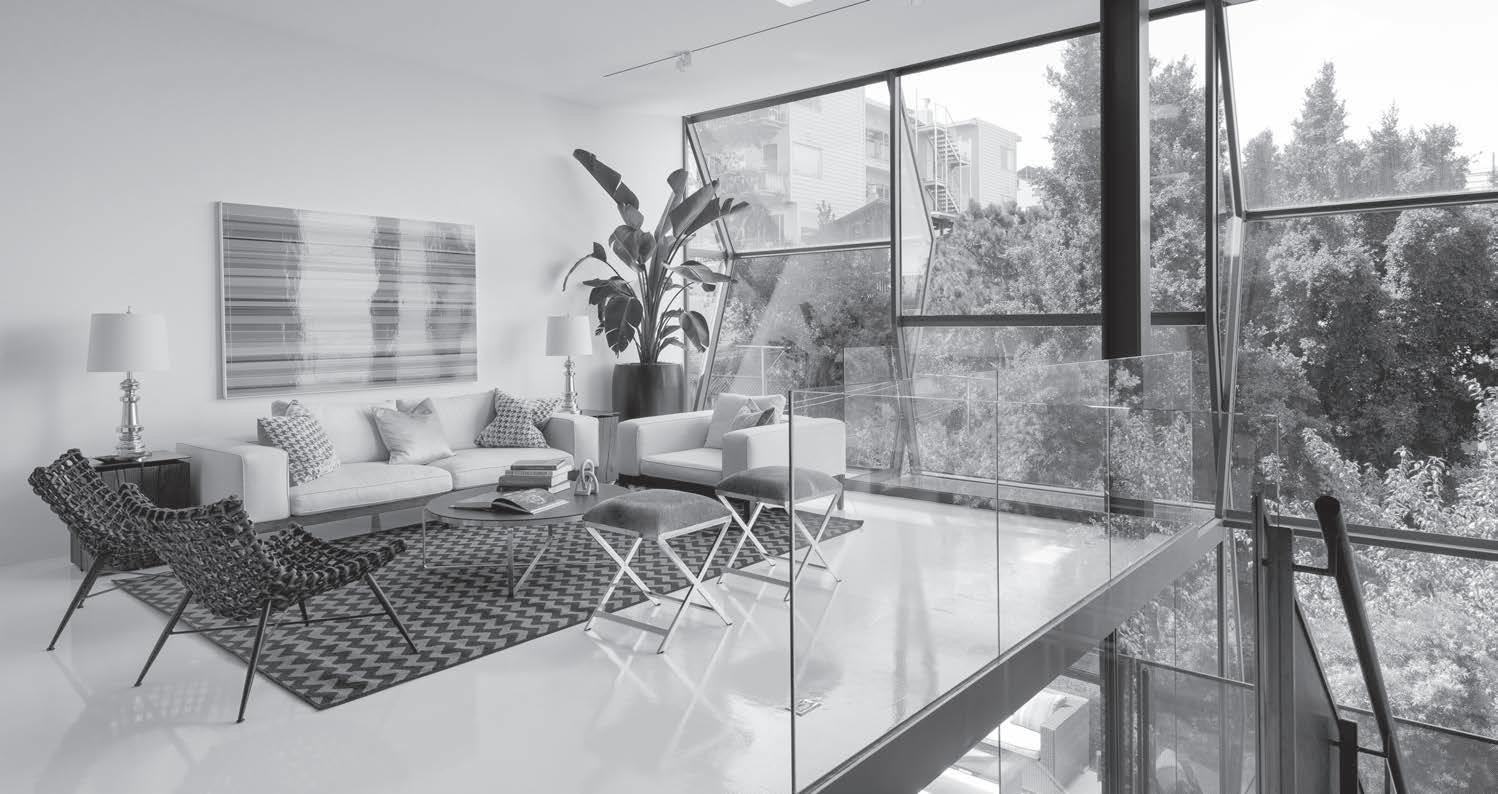

Why I Choose to Raise My Family in San Francisco
BY JULIE CRABILLSan Francisco is the most dynamic, captivating city in the world. And I’ve been around. Don’t get me wrong, I’ve met some cities with which I’d love to spend a long weekend – or even have a full-on summer tryst – but I’ll always come back to my true love, San Francisco. So even as I approach 40, young at heart and old at liver, I’m raising my three-year-old son, Jack, in a city many people flee from once they start a family.
As the founder of Inner Circle Labs, I love exposing Jack to the smart, forward-thinking founders and chief executive officers that come through our doors. With this point of view, he’ll be the one experiencing new innovations before the world decides which technology is worthwhile enough to go mainstream. He’ll be in the center of the magic and the mess; doesn’t that make life more fun?
Does it mean he’ll hear more f-bombs as we walk the streets than he would in the ‘burbs? Sure. But it also means he’ll be exposed to a diverse set of socially-minded, creative people who are pushing to make the world a better – or at least more interesting – place.
Beyond all of that, which is a huge part of my choice to raise Jack on Arkansas Street, let’s not
forget the most important people in creating a happy, well-rounded child: their parents. My partner, Jon, and I are better, more generous, savvier, more culturally aware and ultimately much happier ourselves for continuing to live in this beautiful city. I can’t even imagine how it’d damage his perspective if he got the feeling that we’d left our dream
environment and moved to the ‘burbs just because we had a kid. Perhaps children of these tract-home-buying, boxed-wine-drinking automatons have no idea that the soul-sucking that happened to their once young and alive parents was at their hands. But maybe they do… and that’s just not a risk I’m willing to take.
“Why I Choose to Raise My
Family in San Francisco” is the brainchild of the Potrero Residents Education Fund, a nonprofit committed to helping create a stronger, more vibrant San Francisco by ensuring that families from a diversity of income levels raise their children in the City. Submit your reasons to editor@potreroview.net.
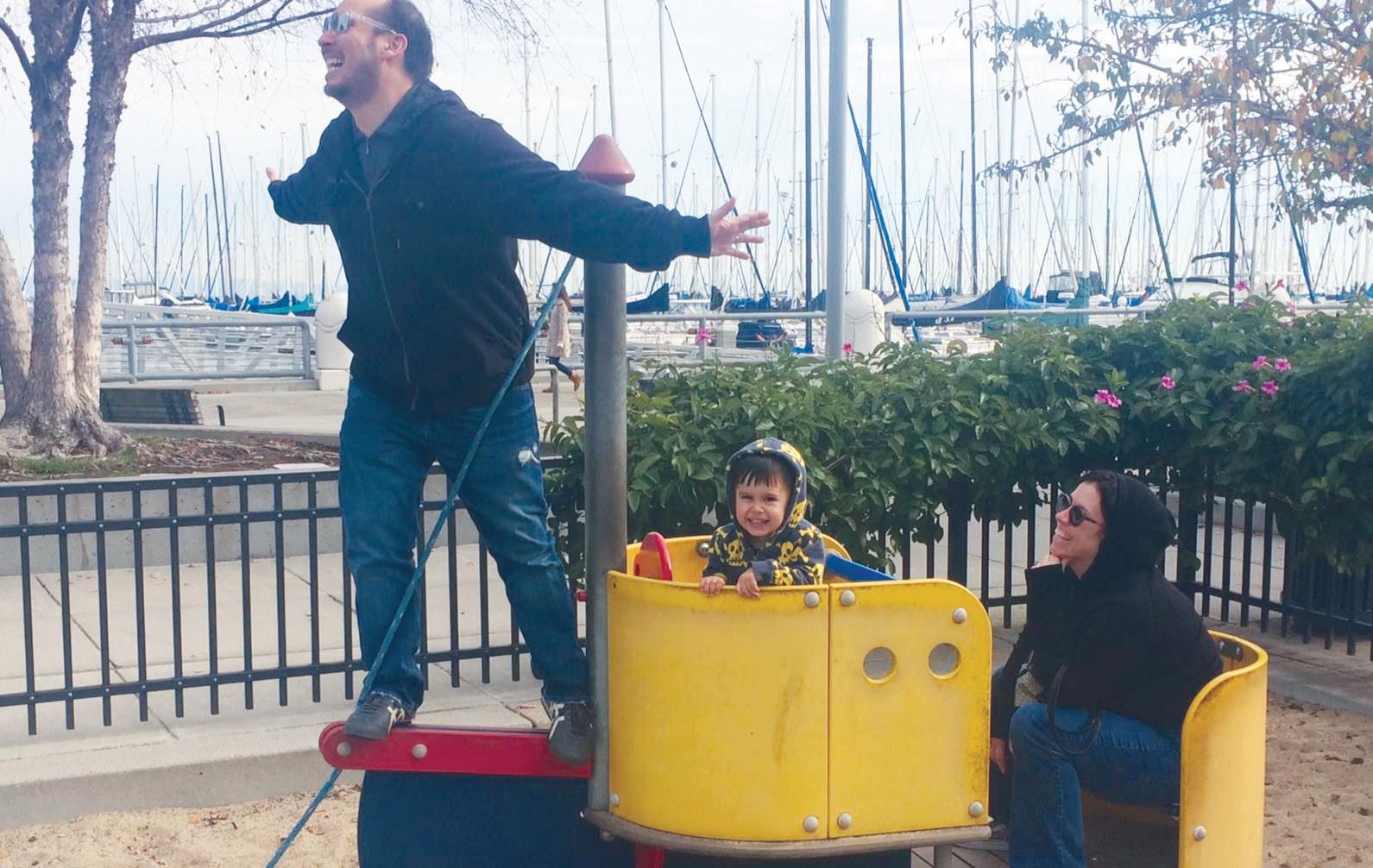



CPMC St. Luke’s campus, your neighborhood partner.
What would life be like without partners? At Sutter Health’s St. Luke’s campus, our caregivers listen to you, like the specialists at St. Luke’s comprehensive Women and Children’s Center. Plus, we provide tools that connect you – like email messaging, online medical records, prescription refills and same-day appointments. And, whenever you need to visit, we’re nearby with eighteen physician offices and four CPMC hospital campuses, including St. Luke’s. Because local partners help make life a little easier.


SPECIAL | VISITORS’ GUIDE
Tips to Act Like a Local
BY DEBBIE FINDLING AND STEVEN J. MOSSSan Francisco is a cacophony of contradictions. Other than the few natives – most of us are from Michigan, Pennsylvania, or Southern California, so really, start your geographic networking as soon as you get here – there’s a sense of inferiority to New York. Yet there’s an insistence on referring to San Francisco as “The City” – as if there are no others – and a not so hidden neighborhood pecking order. If you live in the Sunset, make sure it’s the “Inner Sunset.” Pacific Heights trumps everything, unless you live on Divisadero, in which case you’re better off saying you live in “NoPa.” Then there’s the “Mishpot,” which is not quite Mission, not quite Potrero Hill, but, anyway, nice to visit.
There are more dogs in San Francisco than children, with way more money spent on dog-related retail outlets, dog-services, and dog-friendly policies. There are more homeless people than in most urban areas, due to our temperate climate and liberal politics, and of course many of the homeless have dogs. Legislation passed several years ago banned the homeless from sitting on the sidewalk. Don’t worry, you’ll still see plenty.
San Franciscans insist on paraben-free cosmetics, but have nearly
as many blow-dry bars as bars on our iPhones. A group of naturists – the Naked Men – lounge nude at outdoor cafés and parade up and down City streets no matter the weather. The City supervisor that represents the Naked Men’s habitat, Scott Wiener – that’s his real name; stop to giggle – sponsored an ordinance that requires nudists to put a “barrier” between their derrieres and chairs in public venues. Rumors have it that copies of The Potrero View have been used for this purpose. But not the one you’re holding in your hand!
Mostly, San Franciscans obsess about the weather, where to eat, the poor quality of public transportation, the mentally unstable homeless, and the exorbitant real estate prices. The best way to start a conversation with a stranger: ask them what neighborhood they live in, or their favorite restaurant in which to eat. If you want an argument, tell them you’re from Los Angeles. For some reason it annoys people.
Whether the Weather
California is prone to droughts, and recently may, or may not, have emerged from one. But here in the City by the Bay it’s not so much about whether it’s wet or dry, but the foggy
cold summers. That might be why San Franciscans dislike Southern California, where summer is indeed endless, especially if you’re stuck on a hot freeway.
San Francisco boasts an average temperature of 62.5 degrees. Inexplicably even to a native, the warmest months are September and October. Heat is rarely needed in the winter –just a few minutes to get the chill out – and air conditioning is provided by the fog. Don’t let the mid-day sun and warm temperatures fool you. When the fog rolls in over the ocean and creeps down from Twin Peaks, it can
feel downright freezing. And a fun, or soul shattering, fact: that fog horn you hear is ear nostalgia. Radar and GPS made the horns obsolete several years ago; they only go off to create the right atmosphere.
The fog tends to hover over specific neighborhoods, typically sucked into the City by rising temperatures inland. It starts at the ocean and crawls toward the bay. Neighborhoods near the Pacific – the Sunset, Richmond, and Forest Hills – can be 20 degrees colder than their sunny counterparts
LOCAL page 9
San Francisco’s Most, or Second-Most, Crooked Street
BY KEITH BURBANKSan Francisco’s most, or perhaps second-most – depending on whom you ask – crooked street was a straight, unpaved road one hundred years ago. Vermont Street’s serpentine pathway was constructed in the 1930s as a Works Progress Administration project. The argument over which street – Vermont or its world-famous cousin, Lombard – is the most crooked has gone on ever since.
Perhaps the earliest record of the curve competition appeared in a 1962 article by Joseph Sheridan,

published in the News Call Bulletin , which reported that roughly 40 Hill residents wanted to make Vermont Street as famous as its cousin. The residents dedicated three weekends in a row to installing sprinkler and irrigation systems, landscaping and generally beautifying their mostcrooked-street, planting some 200 or more trees and plants, including junipers, Veronica, pines, Escallonia rubra and Diosma , some of which are still growing today.
Lombard Street was built in
CROOKED STREET page 10
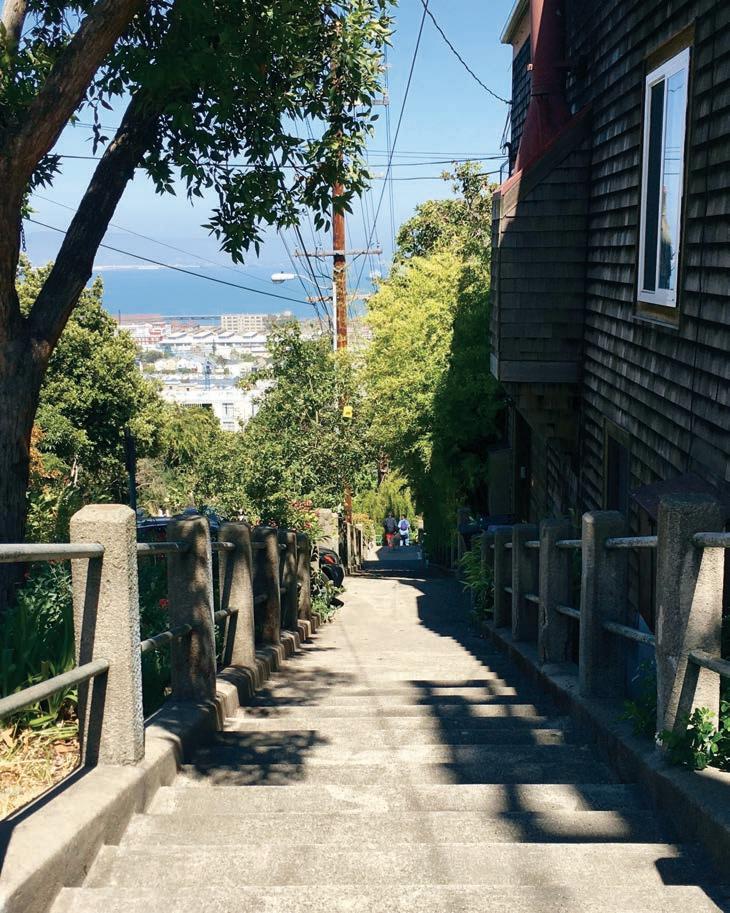
Outdoor Stairways Make the Hill More Pedestrian Friendly
BY JACOB BOURNEThe San Francisco Bay Area’s many publicly-accessible outdoor stairs not only provide scenic views and a good aerobic workout, they help community members and visitors navigate the often undulating terrain of their neighborhoods. This is particularly the case in Potrero Hill and Dogpatch, where hills compete with Interstate 280 and Highway 101 to make the area challenging to negotiate by foot.
“When you’re living on a hill in a disconnected grid, the stairs provide a healthy way to get around without a car and provide a good connection for the neighborhood,” said J.R. Eppler, Potrero Boosters Neighborhood Association president.
Notable stairways include a short but peacefully landscaped flight at Carolina and 20th streets, which connects a dead end residential area on Carolina Street with the International Studies Academy a short walk away. A more rough and tumble pathway stretches from what would be 19th Street, connecting Rhode Island and
De Haro streets. Near Highway 101 and the Potrero Hill Community Garden, a series of steps adjacent to McKinley Square run alongside the crookest part of Vermont Street, along with a few short staircases that provide access to the park. Two short staircases connect Southern Heights Avenue with Carolina Street, and where Carolina Street branches near 23rd Street. At the area’s southern end there’s a stair connection accessed on Cesar Chavez Street by the 101 ramp.
A staircase that may soon be improved is located at 22nd and Wisconsin streets. Twenty-second Street runs west to east beginning at Potrero Avenue, reaching Pier 70 alongside the Bay, divided along the way by 101, the Potrero Hill Recreation Center, and 280. Existing stairs run west to east along 22nd Street, and connect Wisconsin and Arkansas streets before turning into an undeveloped length of trail between Arkansas and Missouri Streets, passing Connecticut Street through the Potrero Hill Recreation Center.
STAIRWAYS page 10
Plenty of Opportunites to Get in Summer Shape in Southside San Francisco
BY REBEKAH MOANAside from hiking or bicycling the steep slopes traversing Dogpatch, Potrero Hill, and South-of-Market, there’s a plethora of more structured ways in the area to get fit. Residents and visitors to Southside neighborhoods can choose from upwards of 50 gyms, studios, and structured outdoor play to pump iron, dance, stretch, or spin.
Fitness SF SoMa, at 1001 Brannan Street, spans an entire city block, and features high ceilings, an open floor
plan and natural light. Opened in 1997, the gymnasium spans more than 26,000 square feet, housing in excess of a hundred pieces of cardio equipment, free weights, and exercise machines. The more than 50 fitness classes offered weekly include Zumba, Spin, and yoga. Lately, Yelpers have been raving about Gina’s Total Body Challenge class – a mix of total body resistance training using a variety of equipment combined with mild to intense cardio – saying it’s motivates them to get to the gym.
Southside’s Public Spaces
BY CLAIRE BOTSYMost Dogpatch and Potrero Hill green spaces don’t offer the facilities frequently found in parks elsewhere, such as restrooms, barbeque pits, or picnic tables. Instead, expansive views, muffled freeway noise, and a certain eccentricity mark these public areas. That may be because almost all of the Hill’s community places were manifested by volunteers, who pulled together what was available to them, creating a compelling array of halfhidden mini-havens.
Jackson Park – nestled between the 280 and 101 highways and encompassing the square made by Mariposa, 17th, Arkansas and Carolina streets – is one of the Hill’s larger public spaces, offering a two-tiered sandfloor playground, baseball fields and basketball court. The park has a wind-
ing wall that features mosaics created by community artist Josh Sarantitis and neighborhood children. Plans to renovate the park, including its clubhouse, are being developed.
Mariposa Park, part of Mission Bay Parks, sits across the street from the University of California, San Francisco Medical Center. Scheduled to open this month after a lengthy delay, the park features a plaza with picnic tables covered by a large trellis, shading the area. Originally a railroad car turnaround, the plot now offers a playground, several seating areas, and a generally pleasant space to spend time in.
Starr King Open Space was created in 1984, when an area that’d been occupied by World War II-era
SPACES page 14
Monthly membership fees range from $69.95 to $89.95, depending on the initial enrollment payment. Members have access to all six Fitness SF gyms, group classes, free parking at three locations, towel service, and EO body products. A daily drop-in rate of $25 is offered; with a member, it’s $20.
At SF Iron, on 545 Folsom Street, barbells are the exercise tool of choice. Patrons train with an experienced coach, who designs a custom program to match with fitness goals. The gym’s motto is “strength for everyone.” According to one Yelper, “The crowd at SF Iron is diverse. You will find all ages, genders, shapes, and sizes there and everyone is supportive of one
another. Anyone interested in becoming the strongest version of themselves will feel right at home.”
Clients start with an introductory package that consists of three, one-hour sessions for $225. Fees then vary depending on how often a person trains, and if they engage in private, semi-private, or small group sessions. A drop-in rate of $20 is available on Saturdays, between 10 a.m. and 4 p.m., and weekdays, typically from 1 p.m. to 4 p.m.
Fitness for the Heart, at 49 Townsend, offers a holistic program that includes exercise, therapeutic
GYMS page 10
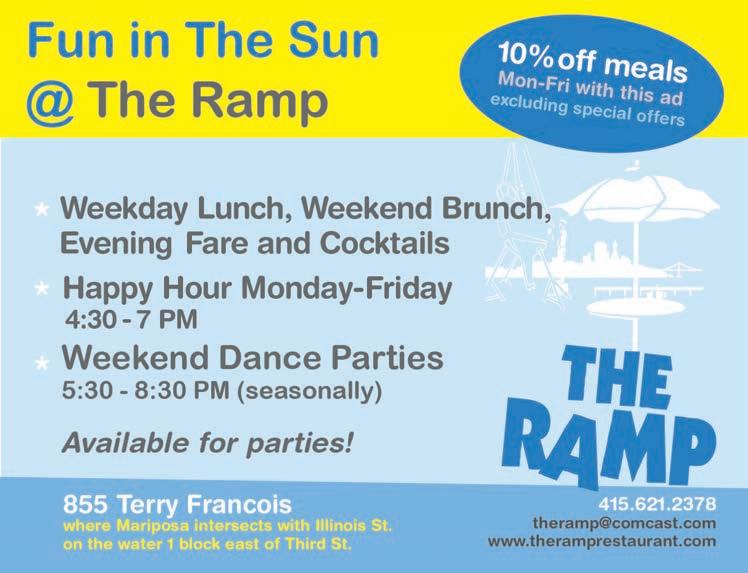
SPECIAL | VISITORS’ GUIDE

Lots of Things for Kids to Do in Southside San Francisco
BY JESSICA ZIMMERSouthside San Francisco offers a range of activities for children, including photography, dance, soccer, and Jiu Jitsu. Many of the goings-on focus on confidence-building, fitness and developing lasting friendships.
According to Lisa Nowell, founder of Recess, a play space at 470 Carolina Street, her company’s 7,400 squarefoot community venue is a favorite for neighborhood babies to four year olds, many of whom visit daily. “We have an area just for crawlers, a train table, a pretend play area, slides, swing, a climbing wall, and a variety of classes, from messy art, to music classes to cooking,” said Nowell. “Recess also has a parent education component, which helps facilitate support and connection.”
Recess offers an afterschool pro -
gram for children up to age 10, and is organizing playgroups for children with special needs. “I think that parents come for their kids, but end up really staying for the community,” said Nowell.
Lisa Flood, coach for SFF Soccer Juniors, which plays at fields located on Fourth Street and Mission Bay Boulevard South and 261 Loomis Street, said the business offers soccer instruction for children between the ages of 18 months and five years, with league play for children over five. “Two to three coaches run the program, which is 45 minutes long,” said Flood. “We first work on improving coordination and getting the kids used to a lot of repetition. Later we teach them skills, like rolling the ball onto your feet, and
Chocolate Lovers in Luck in Southside San Francisco
BY KAYCI WEAVERSan Francisco is the birthplace of two of America’s oldest chocolate makers: Ghirardelli and Guittard Chocolate Company. Both have their roots in the Gold Rush, when enterprising businessmen realized that wealthy miners with a sweet tooth had money to spend on luxuries. The companies continue to make confections in the San Francisco Bay Area. And, as a new kind of wealth sloshes around the City, these venerable chocolatiers have been joined by other confectioners, many of which are located in Southside San Francisco.
Dandelion Chocolates, in the Mission, is a “bean to bar” chocolatier; the company sources its own Cacao, roasts the beans to its specifications, and processes them with sugar to create its confections. Tours of Dandelion’s
Church Congregations Grow Alongside Population
BY JACOB BOURNESome churches in the View’s readership area have reported recent growth in attendance and membership despite the City’s reputation for having a high percentage of religiously unaffiliated individuals.
According to 2014 data from the Pew Research Center, 35 percent of San Franciscans are unaffiliated, compared to 23 percent nationally; 48 percent classify themselves as Christian, compared to 71 percent for the U.S. Fifteen percent of City residents belong to a non-Christian faith, while only six percent in the nation has similar beliefs. Sperling’s Best Places, a web-based data service that analyzes trends in American living, indicates that two percent of San Franciscans practice Judaism, one percent is Islamic, and three percent adhere to an Eastern religious tradition.
St. Teresa of Avila Catholic Church has about 200 member families, a small subset of the quarter of the City’s population who are reportedly Catholic. The Church was established in the 1880s, expanding from a Third Street boarding house. A permanent church was built on Tennessee Street, but as the population migrated the structure was disassembled and rebuilt at its current 19th and Connecticut streets location. A school associated with the parish closed in the 1970s due to a lack of enrollment.
“It’s a small close-knit parish,” said Stephani Sheehan, Church secretary. “The majority of families live in the area. Our numbers have been growing as the population has increased in the past three years or so.”
St. Teresa’s is active in the Society
of St. Vincent de Paul, a national charity with 160,000 volunteers. Once a week volunteers distribute groceries to those in need; they make sandwiches for homeless individuals monthly. Faith formation classes are offered to children on Sundays.
Rhode Island Street, near Southern Heights Avenue, is home to City View Church, a Christian flock that began about 30 years ago. According to Augustine Garcia, the senior pastor, the congregation focuses on working with the homeless, especially in the Mission. The community is small, with roughly 15 people regularly in attendance for Wednesday services and about 10 on Sundays. Garcia emphasized that the Church is open to everyone, and encouraged new visitors.
Though less than one percent of San Franciscans identify as Episcopalian, St. Gregory of Nyssa Episcopal Church on De Haro Street draws a large congregation from around the San Francisco Bay Area to its unique form of Sunday worship. Only about 20 percent of regular attendees live in the neighborhood. “It’s a Church that’s internationally renowned for highly participatory services,” explained Church pastor, Reverend Paul Fromberg. “We have a huge number of visitors every Sunday. Unlike a lot of churches, we don’t use organs or bands for worship. We use acapella, which is distinct for churches. We’re committed to not just using our minds and hearts but our bodies in prayer as well. Movement is a big thing for us.”
St. Gregory’s has been in Potrero Hill since the early 1990s. As it’s
Valencia Street facility are available Wednesday through Saturday by online appointment for $5, with hot cocoa offered at the end. Chocolate-making classes are proffered for children and adults.
Poco Dolce, founded in 2003, is a “chocolate confectioner” buying processed chocolate to create its products. Poco Dolce sources from Burlingame-based Guittard’s, which was founded in the mid-1800’s, and remains family-owned five generations later. Poco Dolce recently opened a renovated, minimalist, storefront on Third Street, a few doors down from Dogpatch Wineworks, a San Francisco event venue, winery and tasting room.
Recchiuti Confections also sources from Guittard, as well as from the
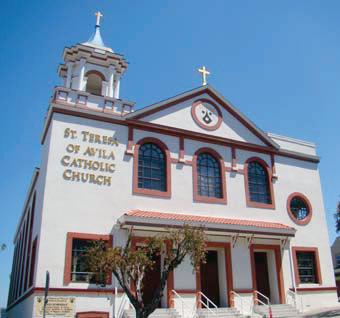
to the east; Dogpatch, Potrero Hill, the Mission, and South-of-Market. San Franciscans rarely leave the house without a jacket or sweater. You can spot a tourist by the Golden Gate Bridge emblazoned on the sweatshirt they hastily purchased when the sun disappeared and the temperature unexpectedly dropped as the fog blanketed the City. And since the weather can change dramatically from one day to the next, San Franciscans tend to dress for yesterday’s weather.
Sustainable Sustenance
San Franciscans are insufferable about food. According to legend, there are enough restaurant seats in the City for everyone in town to eat out at once; just don’t try to get into to Delfina without a reservation. A pile of kale that used to be pig feed is now an $18 salad; wine is what you do when you see the per glass prices.
Reservations are needed ahead at the most popular restaurants; without them waits can be an hour or more. Pera and Goat Hill Pizza, on Potrero Hill, and Just for You and Gilberth’s Rotisserie & Grill in Dogpatch, are modestly priced and good eats. Otherwise, make Yelp and OpenTable your new BFFs.
Oh, The Places You’ll Go
It may hurt Hertz, but there’s no need to rent a car during your stay, unless you’re planning an out of town trip. Parking can be scarce and expensive. There are lots of ways to get around on public transportation, costing from a couple of bucks to upwards of $20 or more within the City.
We share, because we care. You can ride-share, car-share, bike-share, apartment share, even partner share, if you go to the right bar. Many locals like taxis because they feature actually licensed drivers, and can be accessed through the Flywheel app. There’s also Uber and Lyft; download the app and register by entering a credit
card, preferably yours. When you’re ready to go, click on the app, and request a car. The app’s GPS system will know where you are and will tell you how many minutes – usually less than five – before your driver arrives. You can also watch a cute icon of your driver’s car as it moves along the map in a decidedly cartoonish sort of way. Many of us hold our phones up like a lighter at a 1970s concert so the driver knows who we are and, upon making contact, we promptly ask, “Are you my Uber/Flywheel/Lyft?”
When you arrive at your destination, thank your driver, jump out of the car, and you’re good to go. No payment needed; the credit card will be automatically charged based on a set rate per mile/time. And no tipping. You’ll receive an email within seconds confirming the rate.
You’re getting into someone’s personal vehicle. Be nice. Your driver will be rating you based on a star system, with four stars being the best. And you, conversely, will have the opportunity to rate your driver.
You can also tap into a car-sharing service, which is a twist on the corporate car rental. Car-sharing is designed to be convenient for people who want to rent cars for short time periods. You can access a car any time from a number of parking pods. It’s more cost-effective for locals and longer-term visitors, but if you want to try it, just download an app: Zipcar, City CarShare, or Getaround.
If you prefer to get around on pedals, get a 24-hour or three-day membership from Bay Area Bike Share. There are kiosks throughout the Bay Area; sign up, enter a code, wait for the green light, and pull the bike out of the rack. After your trip, return the bike to any station.
Public transportation is also ample and easy to navigate. Within City limits, the system is called “Muni,” short for “Me, You, ‘n I, together in one car,” and includes above- and below-ground trains and electric- and diesel-powered busses. Muni is easy, clean, safe, and cheap – $2.25 per ride for adults – but often slow and unpre -

dictable, the latter referring to some of the passengers.
BART – Boy, Aren’t Rides Terrific! – is what New Yorkers call the subway and Washingtonians call the Metro. BART runs within City limits and to cool places outside San Francisco, such as Berkeley, or Daly City. BART also goes to/from the San Francisco and Oakland airports. Caltrain is neither Muni nor BART, but rather a real train that takes techies to their cubicles in Silicon Valley.
There’s a television commercial from the 1960s that features a cable car and a slightly annoying jingle: “Rice-A-Roni…the San Francisco treat.” Fortunately, the commercial is no longer on the air, but cable cars are still a San Francisco treat. Locals don’t ride them; the routes are limited, they’re excruciatingly slow, if it’s foggy out, they’re cold, and they’re usually jam-packed with tourists. That said, cable cars are awesome, as are the oldtimey street cars that ply the Castro, Market, and the Embarcadero.
Great Places to Visit
• T ide Pooling at Fitzgerald Marine Reserve in Moss Beach (no relation) www.fitzgeraldreserve.org
• S anta Cruz Beach Boardwalk www.beachboardwalk.com
• H iking the trails at Land’s End and Marin Headlands www.nps.gov
• A nimation Studio and Carousel at the Children’s Creativity Museum www.creativity.org
• C rookedest Street (Vermont, not Lombard)
Other Things to Do
• Se gway Tour www.electrictourcompany.com/
• A lcatraz Tour www.alcatrazcruises.com
• Muir Woods www.nps.gov/muwo/ index.htm
• Ripley’s Believe It Or Not in Fisherman’s Wharf www.ripleys.com/ sanfrancisco/
• Jackson Playground on Potrero Hill www.sfparksalliance.org
• Balmy Alley in the Mission (blocklong concentration of graffiti murals) www.balmyalley.com
• Ch inatown www.sanfranciscochinatown.com
• Japantown www.sfjapantown.org
• E xploratorium www.exploratorium.edu
• C alifornia Academy of Sciences www.calacademy.org
• T he entire Napa Valley
SEX WORKERS from Front Page
for the Ninth Circuit.
According to Doogan, passage of Proposition 35, which expanded definitions regarding sex trafficking, was a critical factor in entities failing to provide necessary services.
“All of a sudden, they began including sex trafficking in their mission statement,” said Doogan. “You saw them pandering to sex trafficking language. Since then, they have associated themselves with law enforcement, and not in a good way.”

1922, according to a 1977 SF Progress story by Carol Kroot. Vermont Street has five curves compared with Lombard’s eight. Lombard Street features an 18.18 percent grade, according to a 1977 San Francisco Chronicle story by Peter Stack. Vermont Street’s grade, or steepness, is 14.3 percent, about four percent less steep than Lombard.
Also in 1977, City officials decided to make Vermont Street oneway southbound, a decision that’s lasted until this day. A sign at the top of Vermont Street, where the curves begin at McKinley Square, states: “trucks not advised.” Another placard indicates that trucks weighing more than three tons are prohibited. A 1940s photograph shows a car driving northbound on Vermont Street’s curves from a straight stretch of road south of 22nd Street, before the freeway was built.
Houses lines both sides of Lombard Street, while Vermont Street has homes only on its east side. The west side features views of U.S. Highway 101 and Zuckerberg San Francisco General Hospital. Although previously planted Escallonia rubra has white, pink and red flowers, nothing was blooming on Vermont Street last month. Pines and other evergreens loom large, and in places create a canopy for drivers. Shorter trees and bushes line the curves.
Traffic has been a concern for years for Lombard Street residents, who have complained of the noise and damage done by vehicles crashing into their homes. Lombard Street residents also complained of traffic of a different sort. The Bring Your Own Big Wheel Race started in 2000 on Lombard Street, but residents complained that the bright colored plastic toys stopped traffic and damaged shrubs. Founder Jon Brumit took the race to Vermont Street,
where since 2008 it has been a hit with riders and residents.
History has nothing to say about Hill residents’ traffic concerns, at least as it relates to Vermont Street. Less than a half-dozen automobiles traveled down the street in 30 minutes during a late-morning in early July. The traffic was so sparse someone could walk down or up the street without fear of being hit.
Those who argue that Vermont Street is the most serpentine in the world, or at least in the City, base their claim on the tightness of its curves. In photographs, Vermont Street’s curves appear tighter than Lombard’s.
When asked for a verdict on the contest, San Francisco Travel spokeswoman, Laurie Armstrong, cited a 1995 edition of the San Francisco Almanac that states that Lombard Street is the most crooked.
develop a stairway design. The plan’s current rendering details the top of the staircase at Connecticut Street, ending at Missouri Street. In addition to a staircase, the project would add significant landscaping, with native species plants, vegetable beds, a worm farm, and a meadow for pollination, with a native bee refuge. The plans present two options for the placement of garden planters along the stairway’s length; representatives from the nearby Connecticut Friendship Garden want the gardens to be placed on one side of the stairway instead of in a bed running down the middle. Overhead and ground lighting would be added for safety. Construction would incorporate decomposed granite, permeable pavers, and Corten Steel weathering risers to protect from rust.
option for 22nd Street.”
“They provide better pedestrian connectivity to different areas. We are very excited about connecting Dogpatch to the Potrero Rec Center; and Potrero Hill with Pier 70 and the Bay,” added Eppler.
GYMS from page 7
Hill residents Jennifer Serwer and Lisa Tehrani, board members of Friends of the Potrero Hill Recreation Center, feel that the trail from Arkansas to Missouri streets is too steep and unsafe for general pedestrian use. They’re part of a group of community members working on a proposed stairway that would connect this route to the staircase between Wisconsin and Arkansas streets, and create accessible pathways to Texas Street and Pennsylvania Avenue.
“Right now you can’t walk from Missouri to Pennsylvania because there’s a fence there,” said Serwer. “In two years you should be able to go from 22nd Street in the Dogpatch all the way up to Potrero Hill. That’s what we’re working on as a neighborhood group within the Parks Alliance.”
Serwer, who is the founder of Hibiscus Studio, an architectural design firm, worked pro-bono alongside Tehrani and Kara Portnow to
“It’s still in a very preliminary stage of planning,” Tehrani clarified. “We’ve heard from the community that they want lighting and garden space in the design. There will be a lot of stairs and landings given the length of the site. We’ve also met with Planning, DPW, and Recreation and Parks, and they’ve all expressed support for doing this. We hope to make it beautiful and provide greater pedestrian accessibility while being as supportive to all the different stakeholders in the community as possible.”
The proposed stairway is in the vicinity of the coming 790 Pennsylvania Avenue development – a mixed-use project with 251 units and 47,800 square feet of commercial space – and would provide pedestrian access for its future residents. Funding sources for the project have yet to be finalized, but those involved are hoping groundbreaking will occur within the next year and that total costs will be under $750,000.
“The freeway blocks our access to other neighborhoods both mentally and physically,” remarked Serwer. “It would be nice to have a pedestrian pathway to connect the neighborhoods with no cars on it. From my perspective, it’s really important to have a beautifully connected pedestrian
massage, diet, and lifestyle coaching. In a single 50 minute session clients are counseled on nutrition – meals, cooking advice – lifestyle – tips to achieve work/life balance – a tailored exercise program – which is videotaped for reference – and integrated sports massage therapy to address specific muscles used in the session. Workouts offered include Pilates, foam rolling and flexibility, weightlifting, boot camp exercises, cardio drills, core conditioning, martial arts, breathing practices, smiling, and stress reduction. Pricing ranges from $25 to $200, depending on whether the session is with a group or one-on-one. Payment must be made in advance; an assessment questionnaire is emailed prior to the first session.
World Gym, located at 290 De Haro Street, has been around for more than a quarter century, and recently completed a renovation. The gym features rows and rows of cardio equipment, Olympic platforms, and a new group fitness area. Amenities include a cafe/ smoothie bar, chiropractic care, and tanning. One Yelper said, “World is rarely that crowded, even at peak hours. This gym is somehow underappreciated. I love it that no matter when I want to work out, it’s never uncomfortably crowded and I never wait.”
World Gym offers two month-tomonth packages: a $199.95 enrollment fee and $59.95 per month; and $99.95 to enroll, $69.95 monthly. Annual memberships cost $749. The drop-in rate is $20.
DIAKADI Body, on 290 Division
GYMS page 14

SPECIAL | VISITORS’ GUIDE
Bars and Breweries Celebrate Anniversaries
BY JACOB BOURNE“The neighborhood is evolving quite a bit, and it’s nice to see some community-focused breweries in the area,” expressed Joanne Marino, executive director of the San Francisco Brewers Guild.
The Guild, a nonprofit, was launched in 2004 to celebrate the craft of American beer and the City’s brewing heritage. It sponsors Drink SF Beer, a shuttle service that rotates through several neighborhoods, stopping at participating breweries on the way. In July the shuttle ran its Union Square/SoMa line, hitting such spots

as Local Brewing Company, Black Hammer, Thirsty Bear, and 21st Amendment. The shuttle toured Dogpatch in May, and will return to the neighborhood on August 17. Hosted by Triple Voodoo Brewery, the tour will visit Anchor Brewing Company, head south to Bayview’s Speakeasy Ales & Lager, and back to Dogpatch for beers at Harmonic Brewing and Magnolia Brewing Company.
“It’s a nice loop and we’ve gotten great feedback,” Marino added. “People have become more aware of all the great neighborhood breweries. Triple Voodoo is fairly new. Magnolia is a couple years old. We’re excited to have a critical mass for the Dogpatch up and running.”
Harmonic Brewing, at the southernmost end of 26th Street, is housed in an industrial warehouse with contemporary styling. Led by Ed Gobbo, Jon Verna, and Eric Tisch, who quit their day jobs to pursue their passion for making and selling beer, the brewery strives to evoke a family-friendly vibe, where dogs and kids are welcome if accompanied by a parent. “We’re planning our one year anniversary party for September 17th, that’ll be onsite at the brewery, but we also hope to have a block party and are working with the City to get a street closure,” said Verna. “It’ll be an all-day party
celebrating the community and other businesses we’ve established relationships with.”
Harmonic’s two feature brews are Rye Old Fashioned Pale, inspired by the old-fashioned cocktail, with a bitter, citrus twist; and the Harmonic Kolsch, its most popular beer, similar to a pilsner but dependent on ale yeast that’s specific to Cologne, Germany.
Magnolia Brewing, adjacent to Smokestack Restaurant on Third Street, was inspired by Dogpatch’s rich history to provide a rustic, comfortable space where a 20th century shipyard worker might stop by for a beer straight from the docks. In addition to draught and cask beer, the brewery serves a full menu of artisanal American cuisine.
Also on Third Street, Triple Voodoo Brewery and Taproom specializes in a fusion of Belgian and West Coast brewing methods that results in unique creations, such as its Inception Belgian Golden Ale, a bright, crisp beer designed to be a “kaleidoscopic experience.” The brewery opened in Dogpatch in 2013. It’s recently partnered with the ALS Foundation to fight Lou Gehrig’s disease with proceeds from sales of its upcoming ALS IPA. Triple Voodoo will donate
No Need to Go to Napa; Southside’s Wine Scene Matures
BY JESSICA ZIMMERSouthside San Francisco is home to a surprising array of wineries, tasting rooms, cellars, and bars that reflect the spirit of European and Central and Northern California grape growing regions.
Bluxome Street Winery, located at 53 Bluxome Street, between Fourth and Fifth streets, features an events space and tasting room. Its production facility specializes in Pinot Noirs and Chardonnays, with grapes sourced from Russian River Valley vineyards.
“We harvest very early in the morning, sometimes around midnight,” said Matt Reidy, the winery’s founding partner. “We race the grapes across the Golden Gate Bridge to our winery, where we sort, crush, ferment, and make our wines.”
According to Reidy, his “warm industrial” South-of-Market space is popular with families, commuters, and neighborhood residents. “On Friday nights, we put on our “Beats and Eats” nights, where we have a live band inside the winery and one of the best SF-based food trucks out front,” he said. “We’re a block from the CalTrain station and two blocks from the ballpark. It’s a comfortable and communal space to enjoy great wines and food.”
Chris Tavelli, owner of Yield, a wine bar at 2490 Third Street, also pointed to his establishment’s warm,
inviting atmosphere. In the last few years he’s seen many new customers, attracted by the bar’s Happy Hour, which extends from 3:30 to 7 p.m. daily, and features $14 carafes and $1 off menu items, as well as Tuesday Trivia nights. The University of California, San Francisco-Mission Bay has “…been good for us. It’s definitely been more people from the neighborhood first, but we also get a lot of folks from the South Bay and East Bay,” he said.
Yield, which will celebrate its tenth anniversary on September 10, is constantly changing its wine list. “We offer everything from New World, California-style wines to Old World wines,” said Tavelli.
Alex Goretsky, co-owner of La Stazione Coffee & Wine Bar, at 701 Pennsylvania Avenue, said his cozy neighborhood establishment has a small, family feel that’s comfortable for commuters and locals to stop by after work. La Stazione offers Italian wines, particularly from southern Italy, which can be quite subtle.
“Over time, we really curated our selection to what our customers respond to,” said Goretsky. “Our wines open up. It takes a few sips to try them, but when you do, they taste different. They have layers upon layers, waves of taste upon your tongue,”
Ed Kurtzman, partner in August West Winery, with an office located at 540 Barneveld Avenue, Suite K,
Winery Opens Near the Hairball
BY KAYCI WEAVERAt the western elbow of Cesar Chavez Street and Highway 101, between Potrero del Sol and James Rolph Jr. Playground on Potrero Avenue, a new and perhaps surprising neighbor arrived last January to what’d previously served as a Philz Coffee warehouse. The Eristavi Family Winery was founded in 2006 by Victor and Lia, a husband and wife team who began their winemaking journey at Treasure Island Wines, a collective where people share the expensive equipment required to turn grape juice into wine. Eristavi released their first vintages in 2009: 250 cases each of Dry Creek Zinfandel and Amador County Syrah. Since then it has expanded the varietals it works with and techniques it draws upon.
While the winery’s exterior looks like what might be found at an industrial park, its interior has been revamped by the Eristavi family to feel like a cozy living room, albeit with barrels lining the wall. Hidden behind the bar and lounge area is the actual winery, where additional wine-filled barrels are kept. When not being used to make wine, it can be redeployed as a private event space, hosting weddings, baby showers, and other gatherings. The company hopes to draw neighbors in by eventually sponsoring movie nights and popup dinners.
said customers need to make an appointment to visit his facility. “We’re in an industrial area and there’s no foot traffic here, but we love visitors,” he said. “Sign up for tastings on our website. Our wines have a light, delicate body, and are always identified by their beautiful aroma. We mostly make Pinot Noir, small lots of Chardonnays, and in the past have made Syrahs. All of our fruit comes from the Russian River Valley and the Santa Lucia Highlands.”
Aran Healy, owner of Ruby Wine at 1419 18th Street, said his customers can expect to find wines from small, family-run companies dedicated to organic viticulture and natural processes, mostly from Europe. “Our wines are a little fresher and lighter. They’re low-alcohol wines. We have customers all over the world, but 80 percent of our business is pretty local,” said Healy.
Ruby Wine was originally launched by the owners of nearby Plow in 2002. Healy bought the store in 2012 because he wanted to be in Potrero Hill. “I think you have to have a good understanding of the people who have been coming here for many years to stay a neighborhood family spot. That’s really what Potrero Hill is all about. I jumped on it because I wanted to maintain that level of connection to
E ristavi has vinified Sauvignon Blanc, a Pinot Noir rose, Merlot, Zinfandel, Syrah and a red blend called Rouge. One of the company’s most unique offerings is a 2011 white, Blanc. In this bottling, the winery took the grape Symphony – a hybrid of Muscat of Alexandria and Grenache gris created by Dr. Harold Olmo – and aged it for five years in barrels. The wine has fresh fruit aromas and isn’t as oxidative, or nutty tasting, as might be expected from a little heard of white varietal that’s usually reserved for blending. White wines tend to degrade quickly when they’re not well made; it takes high acid content and great care, especially when in the barrel, to make sure the wine will be drinkable.
Victor worked in the pharmaceutical industry for twenty years, and is exacting about the cleanliness of his wines. Lia is a graphic designer by trade, responsible for the design of the company’s labels, as well as the winery’s esthetics. She’s also the photographer behind the pictures visitors see lining the wall behind the bar. Their two children, Nikolas and Téa, both in their early twenties, plan to join the business as it grows.
Lia and Victor were childhood friends in their home country, Georgia, where some of the oldest winemaking artifacts have been found. The United
FEES from page 3
comprehend it. Besides the obvious –the parking place removed from the public was where he parked his car anyway - his bill also lists his stairs and “planters,” essentially the embankment, as encroaching on that 14.5 feet of City property.“The $120 is not going to break me, but it’s the injustice of it,” he said. “They are charging me to use the stairs to get into my house. Why don’t they just put in a turnstile and I can pay a quarter every time I go in?”
DPW told Hines that if he could prove the stairs pre-existed when he pulled his curb cut permit his bill would be adjusted. When he produced a dated photo taken just after buying the home he was told that the agency didn’t accept photos as proof, and needed stair construction permits. Hines has few of those records. In 1978, the property was under foreclosure; he and Seemann had to go to court to fend off creditors to get the purchase approved. Not only were permits excluded from the sale, according to Johnson disclosure of the public use requirement might not have been necessary either.
Hines is particularly riled, however, that no one has returned his requests for a better explanation, although he quipped, “I don’t know how you explain the unexplainable.”
Adding more to the oddity surrounding the land, on the San Francisco Property Information Map - the goto map used by City planners – there’s a blank space where the footprint of Hines’ home should be. The structure, built in 1907, appears on historical maps, but those are unofficial. No one had an explanation for that one.
ARTS | AUGUST

July 20 - August 28, 2016
FOUR PHOTOGRAPHERS
A selection of works from photographers Tama Hochbaum, Fabiola Menchelli, Susan Mikula and Paul Rickert. Hochbaum will show a preview of her series inprogress, Cross/Walks; Menchelli presents exemplary pieces from her 2012-3 Constructions series; Mikula juxtaposes the intimate scale of 2012 u.X with the insistence of 2014 Thrill Show; Rickert displays selections from his 2015 series, Repositories George Lawson Gallery, 315 Potrero Avenue. Information: www.georgelawsongallery.com or 415.703.4400.
August 19 — August 21
Zaccho Dance Theatre (ZDT), San Francisco
Aerial Arts Festival
This collaboration between two exceptional producers - ZDT artistic director, Joanna Haigood, and former ringmaster and czar of special events for the City of New York, Chris Wangro - and two organizations with deep San Francisco roots - ZDT and Fort Mason Center for Arts & Culture - guarantees a world class festival like no other. Tickets are $25 for the Gallery 308 shows; $30 for the outdoor evening program. To pre-order tickets visit https://fortmason.
org/event/the-san-franciscoaerial-artsfestival/. There’ll be no late seating; plan to arrive on time. Information: 415.822.6744 or christopher@zaccho.org.
August 22 - August 28
3Girls Theatre Company, The 5th Annual New Works Festival: 3GT Celebrates Women and the Body Politic in 2016
8/22 Staged Reading: Country Matters. 7:30 p.m.
8/23 Staged Reading: Slice 7:30 p.m.
8/24 Women are the Body Politic! 7:30 p.m.
8/25 ReproRights! Women and the Body Politic. 7:30 p.m. 8/26 Best of LezWrites! 2016. 7:30 p.m.
8/27 3GT Day at Thick House. 1 to 6 p.m.
8/28 GirlWrights Performance Day. 3 p.m.
Thick House, 1695 18th Street. Free, reserving tickets recommended. Visit: www.3girlstheatre.org/2016new-works-festival.
Live Music by John Lewis and Gary Schoofs
Enjoy covers of Beatles, Eagles, Everly Brothers, Simon & Garfunkel, Joni Mitchell and Crosby, Stills, Nash and Young, 7:30-9 p.m. Farley’s 1315 18th Street.
introduce scrimmage games.”
According to Flood, working with the ball is key to soccer success. “It’s easy to kick the ball and send it up the field. But if you’ve got no control, you’ve got no way to get it into the goal. That’s all practice,” she said.
Audrey Jones, workshops coordinator for Rayko Photography Center at 428 Third Street, said Rayko offers a class for younger children, a parent/ child workshop for children ages five through 10, and two courses catering to ages 10 and 18 that focus on digital and darkroom photography. “In the darkroom class we teach the components of a traditional darkroom and what working in a darkroom is like. In the digital class, we photograph the environment, each other, and work on editing and printing images,” said Jones.
Jones said she sees Rayko students learn how to become artists and feel comfortable with their surroundings. “Kids are very patient. Once they understand the basics they can expand on how to develop their style. Maybe photograph things that are tied into their personality,” she said.
Marci Briskin, owner of My Gym San Francisco at 901 Minnesota Street, said her facility offers noncompetitive
Live Music by Potrero Hill resident Daniel Berkman. Berkman is a composer, multi-instrumentalist, and innovator of the kora, a 21-stringed harp/lute from West Africa, 7:30-9 p.m. Farley’s, 1315 18th Street.
Art opening for Santa Cruz photographer Susan Hillyard. Featuring wild horses, 7 to 9 p.m. Farley’s, 1315 18th Street.
Live Music by Soul Delights. Join us for a lively performance, 7:30 to 9 p.m. Farley’s, 1315 18th Street.
August 17
Book Signing: David Dayen. During the recent recession, a cancer nurse, car dealership worker, and insurance fraud specialist helped uncover the largest consumer crime in American history, a scandal that implicated dozens of Wall Street executives. Chain of Title is David Dayen’s dramatic true story of how they took on the nation’s largest banks, and shook them to their core. 6 p.m. Book Passage, 1 Ferry Building, San Francisco. Information: 415.835.1020; www. bookpassage.com
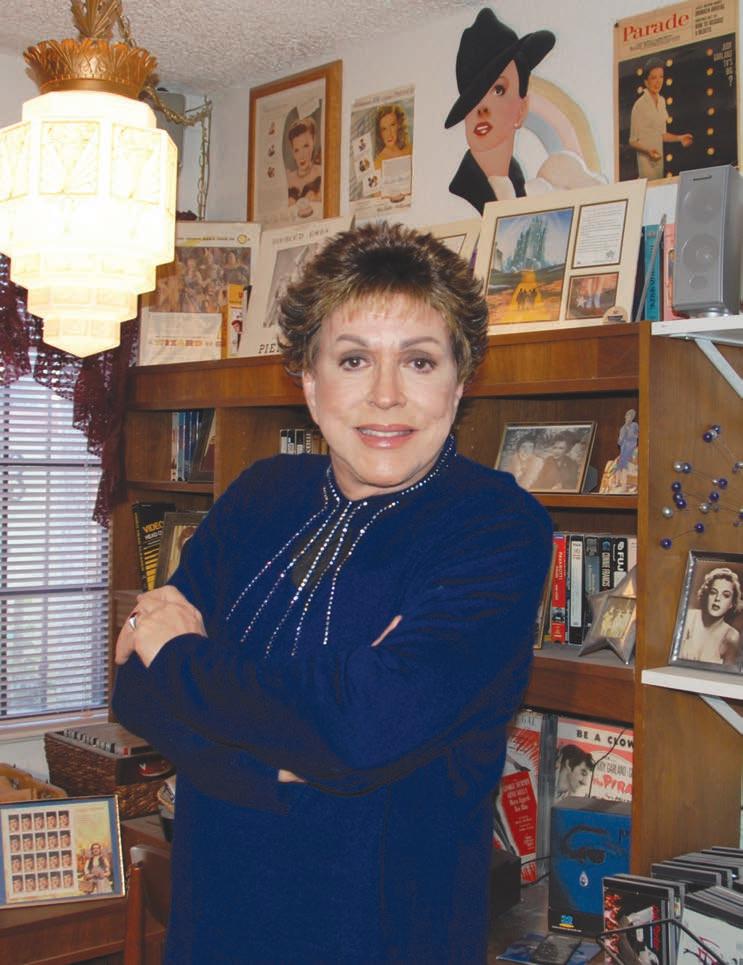
DoReMi Emerges as San Francisco’s Newest Art District
BY MICHAEL IACUESSARising Financial District rents, along with a focused effort to reinvigorate Southside San Francisco’s arts community, has led a large number of art galleries to locate in Dogpatch and Potrero Hill. Catherine Clark, whose eponymously-named gallery had previously moved three times, was among the first to shift from Downtown to Utah Street. Shortly after arriving in 2013, Clark began hosting meetings with others in the art community.
“We were feeling a sort of depression and displacement in the City, as real estate prices got to the point that it was unaffordable to lots of people in all realms of the art scene,” Clark explained. The point of the gatherings, which often drew 50 people or more, was to seek “a positive solution to these economic challenges.”
The group initially decided to call the re-invigorated art zone “MiPoDo,” taking the first two letters of the Mission, Potrero Hill and Dogpatch. That morphed into the catchier “DoReMi.” “The name emerged to reflect a collective effort to show that San Francisco isn’t losing its art galleries, but just changing to a new location,” explained Clark. Significant chunks of Dogpatch and Potrero Hill are zoned for production, distribution and repair, a designation that allows for arts usage, with lower square footage costs than property zoned for multi-use because of less competition for the space.
Among the galleries now clustered at the Hill’s western edge is Brian Gross Fine Art, which shares a former door factory space with the Catherine Clark Gallery. Gross had been located in Union Square and 45 Geary Street for 23 years before moving to Utah Street in 2013. The gallery’s spacious venue castes a minimalist feel to its contemporary art exhibitions, many of which feature Bay Area and Los Angeles artists. Clark’s gallery, which maintains a roster of 25 artists, pioneers new media art; past exhibitions have included software interaction with woven fiber optic thread and an Internet-driven display of movements in the Hayward Fault. Catherine Clark is the City’s first commercial gallery with a dedicated media room, featuring a new screen video installation monthly. Another Utah Street resident, the Hosfelt Gallery, spent 15 years near the San Francisco Museum of Modern Art before expanding into its current 8,900 square foot space three years ago. Its roster leans toward more established, contemporary, avant-garde
Pokémon Go Happy Hour
Come to an unofficial Pokémon Go meetup and enjoy drink specials, as well as a lure module running from 6 to 8 p.m. One post can be accessed throughout the venue; a few others are nearby. Represent your teams, enjoy the game in a comfortable environment, and listen to some music spun by one of Wish’s resident DJs. Free. Wish Bar & Lounge, 1539 Folsom Street.
Introduction to Urban Bicycling
This is a one-hour presentation that covers the basics of how to pick the right bike for everyday riding in San Francisco, the rules of the road, route planning and how to use Bay Area Bike Share. It’s a great introduction for people who are considering bicycling, or looking to brush up on skills. No bicycle, or experience needed. All participants will get a coupon good for $10 off a Bay Area Bike Share annual membership. Register online: www. sfbike. org/resources/urbanbicyclingworkshops/ 6:30 to 7:30 pm, San Francisco Bicycle Coalition, 1720 Market Street.
artists, such as Patricia Piccinini, whose display earlier this summer consisted of peculiar creatures built from silicone, fiberglass, animal fur and human hair. Gallery owner Todd Hosfelt is an advocate of creatives who use technology as their medium, particularly as installations that interact with viewers, such as LED light installations and robotic sculptures.
A couple blocks away, at 311 and 315 Potrero Avenue, the Jack Fischer and George Lawson galleries both moved from 45 Geary Street. Fischer specializes in self-taught artists and those who are considered outsiders; their work defies conventional art history context. Lawson deals with painters or artists who work in disciplines with conceptual ties to painting.
Another cluster of galleries can be found in Dogpatch. Most prominently last spring the Minnesota Street Project opened after more than two years of planning. Located at 1275 Minnesota Street in a former set design studio for Bill Graham Presents and the Grateful Dead, the site hosts 10 galleries, three additional spaces for short-term exhibits, and an afterschool program, the San Francisco Arts Education Project. Among the galleries are those that “have been part of the San Francisco fabric for many years,” according to Project director Julie Casemore. “There are also brand new galleries that have been formed because of the space.”
According to Casemore, venture capitalists and art connoisseurs Deborah and Andy Rappaport investigated several neighborhoods before settling on one they felt could grow into an art district. To keep
Ice Cream Social Chez Panisse veterans Anthony Tassinello and Mary Jo Thoresen show how easy it is to recreate the flavors and comfort of your local ice cream shop at home in this irresistible celebration of all things sweet and frozen. 3 to 4 p.m. Omnivore Books on Food, 3885a Cesar Chavez Street.
UCSF Environmental Impact Report (EIR) scoping meeting
The University of California, San Francisco (UCSF) is proposing to develop a student housing complex on Minnesota Street, between Mariposa and 19th streets, just south of the UCSF Mission Bay campus site. You’re invited to an EIR scoping meeting for the proposed project to discuss concerns and potential issues related to the environmental review. 6:30 p.m. UCSF Medical Center Mission Bay Auditorium, 1855 4th Street. For notification of future meeting dates contact community@cgr. ucsf.edu or 415.476.3206.
August 17th Dogpatch & Northwest Potrero Hill Green Benefit District General Board Meeting. Working together to green, clean, and beautify public spaces in Dogpatch and NW Potrero Hill. Board of Directors meeting. Free. 6:30 to 8 p.m. Tivoli Room, University of California, San Francisco, 654 Minnesota Street. www.dnwphgbd.org/.
Potrero Hill Democratic Club’s 8th Annual Party & Silent Auction
Enjoy food, drink, live jazz and great deals at a party for the community and fundraiser for the club’s educational and service-oriented activities. Featuring a live jazz trio with local musicians, great food from club members and local eateries, and lots of tempting items for your bidding pleasure from the wonderful merchants, many new to the neighborhood, and artists of Potrero Hill and Dogpatch. No host bar. 6 to 9 p.m. Free and open to the public. Dogpatch Saloon, 2496 Third Street at 22nd. Information and updates: www.PHDemClub.org or Facebook page.
gallery rents down, they bought or leased several properties, and created a business model that, while not a nonprofit, is not based on earning a profit. Included in the project is 1240 Minnesota, which’ll soon house workspace for 37 artists, as well as a climate-controlled building at 1150 25th Street, which allows for storage of art collections, and which’ll house additional galleries by year’s end.
A few blocks away, the Museum of Craft and Design found a home at 2569 Third Street in 2013. MCD lost its lease at its Union Square location four years earlier, and had resorted to a series of popup installations. According to MCD spokesperson Wendy Norris, the popups forced the museum to be innovative, and enabled it to engage with a wider public in ways the Union Square location didn’t allow. The new 8,500-square foot venue is double the size of the
original; a little less than half the space is dedicated to exhibitions, with moveable walls. Workshop and programming areas use the remainder. The exhibits, which change every four to six months, range from conventional to unconventional artwork related to craft and design. “It can be everything from traditional artwork to utilitarian items,” explained Norris. “Some of the work harkens back to a time when people were making things.”
Not far away, at 833 22nd Street, that same dynamic can be witnessed at the Workshop Residence. The Workshop, which has hosted 39 emerging artists, local and international, since opening in 2011, produces goods onsite. The artists in residence work in the back of the space; merchandise is displayed and sold in front. The
ART DISTRCT page 20

GYMS from page 10
Street, has been consistently ranked by the San Francisco Chronicle and SFGate as one of the City’s best gyms, with superlative trainers. The gym provides physical therapist-level insights with a personal trainer orientation, according to its website. In addition to personal training, the facility offers yoga, Pilates, physical therapy, and bodywork. One Yelper said, “My workouts are now the highlights of my days, where I not only strengthen my body but also my mind. For the first time I have muscle definition and feel super confident in a bikini!!”
A six-month access pass is $162, paid in advance and nonrefundable. A yearly access pass is $300, also paid upfront and nonrefundable. The dropin rate is $15; a monthly recurring access pass is $29.
Barry’s Bootcamp, located on 236 King Street, delivers hour-long workouts that include 25 to 30 minutes of interval cardiovascular treadmill routines and 25 to 30 minutes of strength training, using free weights, resistance bands, medicine balls, and other equipment. Instructors, muscle groups, and workout segments vary throughout the week. “Barry’s is perfectly challenging, has current and upbeat music – reminds me of a club sometimes – has enthusiastic trainers, high-tech lockers, and even has its own smoothie bar for after you work out. Towels, hair ties, and ear plugs are provided,” one reviewer said.
The Silver monthly membership goes for $450, and allows for at -
tendance at up to 40 classes during a 30-day period. The Silver weekly membership, at $175, gives access to eight classes during a seven-day period. Drop-ins pay $27 for their first visit; otherwise it’s $32 per class.
Other gyms in Dogpatch and Potrero Hill include 3rd Street Boxing Gym, Centered Body Pilates, Giggling Lotus Yoga, and Heart of Akido SF.
barracks was cleared for housing. The space, a knoll at the top of Carolina Street covered in hay and Serpentine grass, features beautiful views. The tops of houses – many being renovated – hover nearby, seemingly level with the park. Visitors, leashed dogs in tow, can stroll along sprawling trails, with occasional glimpses of Golden Gate Bridge. Over the years SKOS volunteers planted native vegetation and eliminated invasive species. A recent plan to remove the Coral Road concrete loop and the sidewalks has stalled due to a lack of funding.
Newly created Tunnel Top Park sits at the freeway entrance to 280-South on Pennsylvania Avenue and 25th Street, on land leased by CalTrain. It’s a small sloped area, with paths that wind through carefully tended flowers. Under the fiscal guidance of San Francisco Parks Alliance, volunteers are working to upgrade the pathways, create murals on the adjacent CalTrain tunnel walls, and install more seating areas.
Located next to Vermont Street,

San Francisco’s first or second crookedest street, McKinley Square offers a playground suitable for babies to eight year-olds, a large lawn space, barbeque pits, picnic tables, and access to adjacent trails. The Potrero Hill Community Garden is nearby, where 51 plots are organically cultivated. Overhanging Cypress trees keep the space shady and partially protected from Highway 101 noise.
The sign posted at the entrance of Fallen Bridge aptly describes this public space as a “Mini-Park.” The small slightly sloped area can be taken in without the turn of a head. A single trail, weaving under a Highway 101 pedestrian overpass circling above the park, leads to a sole bench that, on a clear day, offers westward views. An open area with a dirt floor and halfwalls with mosaics is large enough to accommodate a small gathering. Designed to be multi-functional and accessible, the court is sufficiently spacious to play bocce ball, practice tai chi, or enjoy a mini game of bowling. Maintained by the San Francisco Department of Recreation and Parks and through bi-monthly volunteer workdays, the park emerged from what’d been a dangerous, decrepit area to become a blooming cornerstone of Utah Street.
The Benches sit on the other side of the Highway 101 pedestrian overpass from Fallen Bridge Park. As suggested by the space’s name, benches facing San Bruno Avenue and 18th Street fan out from the end of the overpass into a small paved area, framed by bushes, succulents, and flowers.
A haven in a former industrial
A MONTHLY UPDATE
SPONSORED BY BRIDGE HOUSING
VOLUME 71 • AUGUST 2016
area increasingly littered with office buildings and residential complexes, Esprit Park provides a space for office workers, dog lovers, and families. Originally gifted by the Esprit Corporation, whose offices were located a block away, the park has a large lawn, BBQ pits, picnic benches, exercise area, and a trail that winds through the space. Under a plan developed by the Dogpatch Neighborhood Association, the park would be divided into a natural play area, with trees, grass and vegetation; an off-leash dog space; a picnic spot; and several different spots separated by trails and featuring various plant arrangements.
Woods Yard, at 22nd Street, between Indiana and Minnesota streets, is a small half-paved, half-grassy area. It features semi-functional art in the form of colorful columns, a tiny playground, and seating. Artist Dave Warnke’s “Blockheads” offer a dose of Dogpatch eclecticness.
Progress Park is aptly named for the efforts and wishes of the volunteers who created it. Nestled between Indiana Street and Interstate 280 ramps, it features colorful sculptures, strange and discrete paths, scattered seating, lone swings, and a bocce ball court.
A small strip of Tennessee Street, between 22nd and Tubbs streets, has been recently transformed from a dim and sketchy pass-through for bicyclists and pedestrians to a lush walkway: Angel Alley.
Minnesota Grove, bordering Minnesota Street between 24th and 25th streets, offers a green, lit, pedestrian path, bordered by trees and shrubs
Unite Potrero: Warriors Watch Party
On June 10, 2016, nearly 100 Dubs fans gathered to cheer on the home team at the Nabe for the Unite Potrero: Warriors Watch Party. Every attendee received a gift bag containing a Warriors t-shirt, 2015 Championship banner, and a pair of inflatable thunder sticks. Equipped with these goodies, fans could show their support and make some noise as the Golden State Warriors battled against the Cleveland Cavs in Game 4 of the NBA Finals. Thanks to the Warriors Community Foundation for their generous donation of these fantastic items! The night was full of great basketball, great food (especially wings, of course), and team and community spirit. The Warriors pulled off the win that night, although, in the end, they fell short of being repeat champions this year. Nonetheless, we still love our team. GO DUBS!!!
When is the next Unite Potrero event? It’s coming soon. There will be a Unite Potrero: Backpack Giveaway and Resource Fair on Saturday, August 6, 2016, 11am to 3pm at the Potrero Hill Recreation Center. It’s fun for the entire family. Have a good time while gaining information about a wide variety of educational resources from local preschools to financial aid for college. This event
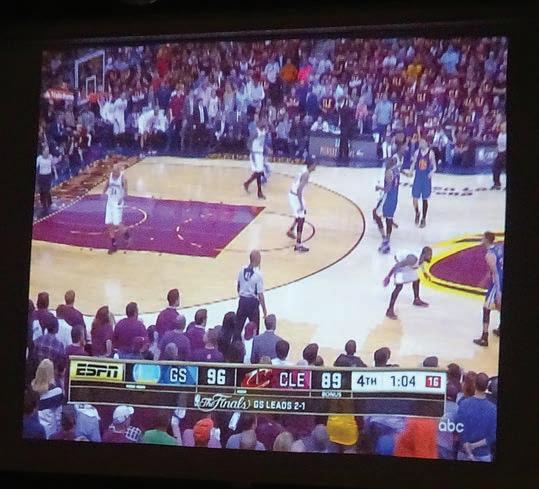


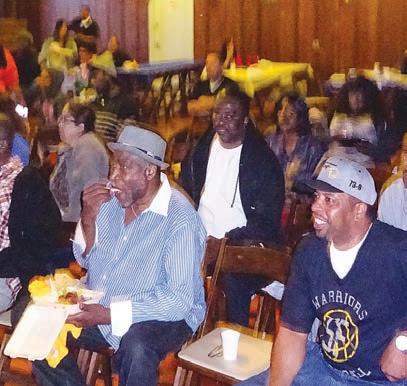
interspersed with flower beds. The space, part of the Green Benefit District’s Jumpstart plan, reflects ongoing efforts to maintain and improve community spaces.
The Potrero Hill Recreation Center, at 23rd and Arkansas streets, is the Hill’s largest green space, with a baseball diamond, playground, indoor basketball courts, tennis courts, recreation center and a lawn. Views from the park extend to Downtown, the East Bay, and San Bruno Mountain.
KIDS from page 12
gymnastics mixed with movement and dance for newborns to eight-year-olds. “We have wonderful, clean, equipment in a 5,000 square foot space. Children attend classes with their parent or caregiver until age three or four, and then can come independently,” said Briskin.
Briskin said her staff is skilled at balancing structured and exploration time. “We have a lot of different equipment: a balance beam, a horse, uneven parallel bars, a zip line, a climbing wall and a ball pit. I’ve learned that it is super important to encourage children to try new things. The most important thing is that they have fun,” she said.
Angelique Bannag, who teaches Tahitian dance for children ages four through 12 at Danzhaus Dance Center at 1275 Connecticut Street, said discipline helps children master movement. “Our students learn basic Tahitian dance moves and language,
dancing to music recordings and live drumming,” said Bannag. “There are techniques to the dance, and I like to teach proper technique. It takes repetition to do well, but the kids get to express themselves too. We do freestyle and learn routines called “otea.””
Moses Baca, Gracie Black Belt Brazilian Jiu Jitsu instructor at El Niño Training Center at 2920 Third Street, said his students, who range from ages of five through 12, also benefit from repetition. “Many students are shy when they first come in,” said Baca. “Within three to six months they develop better posture and they’re moving about ten times better. They gain strength and flexibility. Jiu Jitsu is a good social glue, a bonding experience.”
Carlos Barrios, head instructor of Barrios Martial Arts Academy, housed at 901 Minnesota Street, said his students, who range from two and a half to adults, learn respect, listening skills, and citizenship from martial arts. “It teaches you self-defense and technique,” said Barrios. “It’s not just hitting and kicking. Martial arts is more like a lifestyle, a different way of thinking. We give kids scenarios, like if another kid grabs you, and make sure the students can actually process it.”
Barrios said he sometimes teaches children and their parents in the same room as part of a family class. “We do a lot of practice. I teach Hapkido, a very traditional, Korean-based form of martial arts that incorporates Tae Kwon Do kicks and Karate strikes, as well as joint locks and throws. We, teachers, can only just show you the way to go. They, kids and parents, have
to learn to love the martial arts,” said Barrios.
Justin Alarcon, gym manager at Dogpatch Boulders, located at 2573 Third Street, said climbing is another way to teach children ages six and up trust-building and competitive skills. Dogpatch Boulders offers two types of teams, recreational and competitive. The recreational squad is for individuals new to the sport, meant to familiarize and engage them in working together in a relaxed environment. It mixes beginning climbing training with light exercise, including core work.
The competitive group requires a tryout. It trains individuals to compete against one another in bouldering, sport and speed climbing. “The competitive team takes kids as young as 10, and will go up to seniors in high school. The older kids have kind of a mentorship role with the younger kids. It’s all a group activity. Although climbing is sort of an individual sport, the groups create a team environment. The kids learn camaraderie, and it’s very social,” said Alarcon.
BAYCAT, located at 2415 Third Street, Suite 230, is a digital media school that promotes teamwork and discipline in the arts. The nonprofit offers afterschool sessions to those aged 11 through 17. Children don’t need a portfolio to apply; the program is free for low-income individuals.
“We take the best teaching practices that build inclusion and community. Our approach and curriculum is project-based, and is aligned with K to 12 standards. In addition to the tech skills, we also teach media literacy,
critical thinking and teach our youth to work as a team to create their projects,” said Villy Wang, BAYCAT president.
According to Wang, the program focuses on helping students tell their own stories. “It is the telling of their stories that creates job opportunities for them, which strengthens our communities,” she said.
Southside San Francisco is home to three YMCAs: Bayview-Hunters Point, at 1601 Lane Street; Potrero Terrace, at 1805 25th Street; and Potrero Annex, at 751 Missouri Street. These facilities offer various programs and classes for children and teenagers.
CHOCOLATE from page 8
French company Valrhona, a go-to source for chefs looking to create luxurious chocolate fillings and ganaches Recchiuti’s products are available at the Ferry Building Marketplace, where samples of chocolates and Chef Michael Recchiuti’s collections of caramels and baked goods are offered. Recchuiti also owns The Lab Cafe SF, on 22nd Street, which hosts pop-ups that feature an array of foods, such as Spanish Paella and chocolate “art” events.
A lter Eco, located on Third Street, sources chocolate, rice, quinoa, and sugar from around the world and ships them to Switzerland, where chocolatiers create its products. The company is dedicated to paying fair
CHOCOLATE page 17

Mira's Diary
Dad puts an arm around Malcolm, even though he has to reach up to do it since Malcolm’s latest growth spurt. “We’re the research team, okay? Maybe not as glamorous as your sister’s job, but important just the same.”
“Anyway, you’re right.” I smile at my brother, trying to soften him up. “We need to go home. To Berkeley.” Mom said she has one last, best chance to change the Horrible Thing that will happen in our future. That has to happen closer, both in time and in place, to our lives today. It makes sense, right?”
We’re walking along the edge of the river, heading toward Big Ben. Keeping my eye on the tall clock tower, I feel as if Time itself is guiding me.

“I’m not convinced Mom is in Berkeley, though that would be convenient,” Dad says. “What ever happened there that mattered enough to change? Nothing.”
“ What about the whole Free Speech Movement?” Malcolm objects. “And the anti-war protests of the ‘60s and ‘70s? And wasn’t there that famous kidnapping of Patty Hearst, the newspaper heiress, by the Symbionese Liberation army?”
“ Wow!” Dad’s impressed.“You know your Berkeley history.”
“I go to Berkeley High, Dad.” Malcolm snorts. “Where Indigenous Peoples Day and International Women’s Day are holidays. Students
6
celebrate women’s achievements by making mothers take a day off work to stay home and take care of them.”
“Mom’s not dealing with any of that stuff,” I say. “And she’s not in Berkeley. She’ll be in San Francisco. And I don’t know what time she’s going to, just where. Once I find a Touchstone to take me into the past, I’ll figure it out.”
“And here I thought you’d be dressed like a hippy and talking Power to the People. Wait a minute.” Malcolm grins. “You could be selling those T-shirts on Telegraph Avenue, the Yes-to-Anarchy ones. Maybe you’ll be on Alcatraz when the Native Americans tried to occupy it, take it back as their land.”
“I don’t think that’s it,” I mumble, horrified at the thought of wearing tie-dyed anything.
“ Why not?” Malcolm presses. “Every time you’ve gone back, Mom’s wanted some horrible injustice righted. The way the governor tear-gassed anti-war protestors was terrible. And what could be more unfair than how Native Americans were treated? If I could go back in time, I’d join both those protests.” His voice takes on an angry edge again. For the zillionth time, I wish he’d been the one to inherit the time-traveling gene. He’s the one who’s so passionate about history. I know he’s thinking the same thing.
“ Won’t time-travel be tricky back home?” Dad asks. “Touchstones are old, historical stuff. What’s old in San Francisco? Not much.” Dad leans on the railing, looking across to Tower Bridge, a much older bridge than any in California.
continued next month...
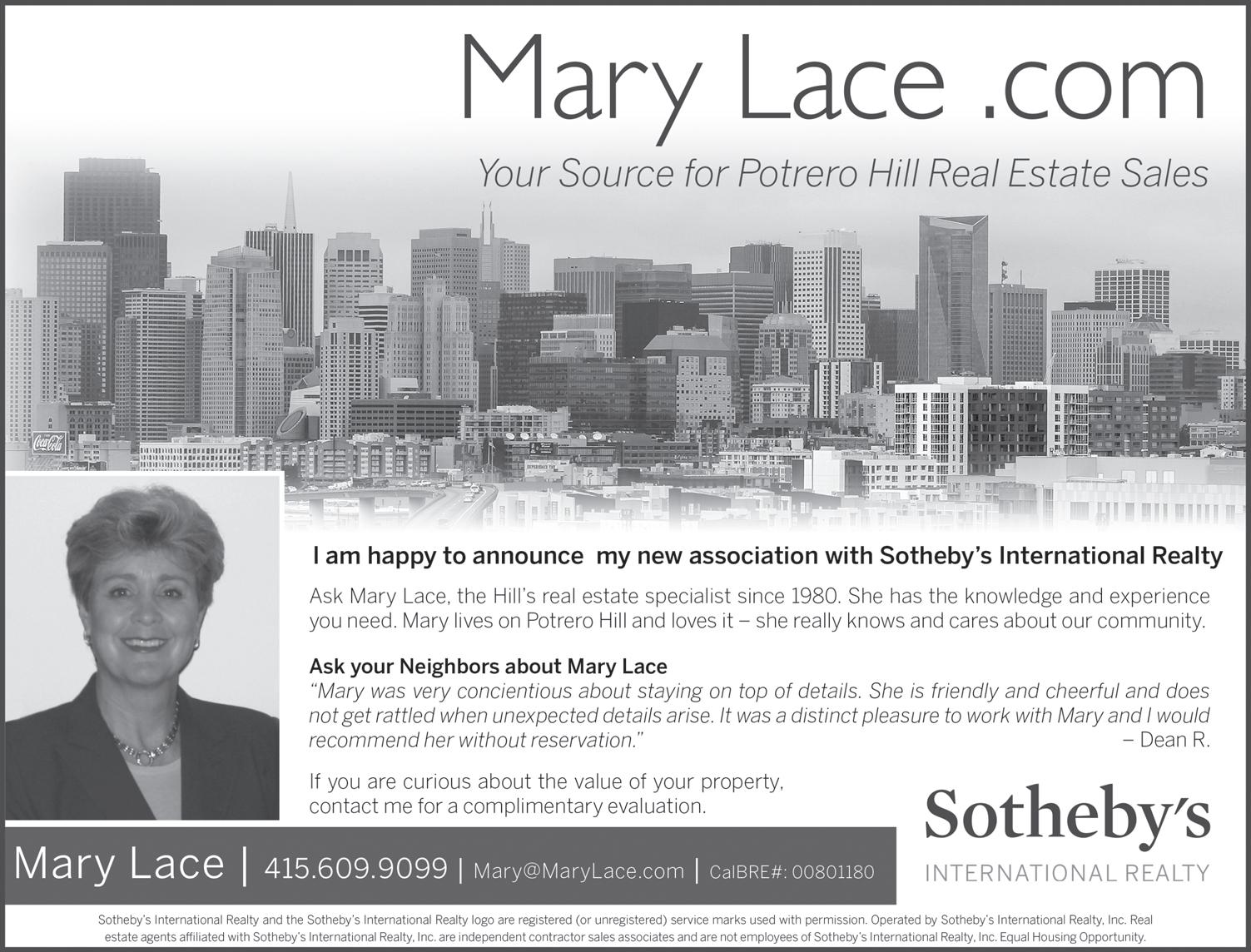
CHURCH
from page
located across the street from Anchor Brewing Company, churchgoers have smelled the yeasty aroma of beer being brewed for decades. The Church has gotten along well with the brewery, and recently reached an equitable agreement with a local developer, whose proposed plans for a 40 foot, 41,772 square foot residential building at 540 De Haro Street would’ve resulted in blockage of the natural light that pours through the Church’s clear-glass windows. “We had a robust hearing on June 2. Eighty-two members of the Church were at the hearing. We happily came up with an agreement with the developer. We’re grateful to the Planning Commission and developer for being flexible to our needs,” said Fromberg.
The Church tries to keep its doors open as much as possible to community members. Neighborhood groups are welcome to use building spaces for meetings and events. Recovery groups, such as Alcoholics Anonymous, have regular gatherings at St. Gregory’s. A food pantry that’s operated since 2001 in conjunction with the Marin County Food Bank distributes free groceries to hundreds of families. In a shaded area next to the building’s main entrance a bench and chalkboard were recently added so that people can write prayer requests and express what they’re thankful for.
On Sixth Street, City Life Church, launched in 2012, has recently noticed an increase in attendance. It’s a Christian non-denomination church that’s part of a group called Ministry Fellowship International, based in Portland, Oregon. City Life has a weekly attendance of about 200 for services, though up to 300 people consider themselves a part of the congregation.
Brandon Spitzack, City Life Church’s director of multi-media, who participated in its founding, said that
there’s talk of increasing services to two per week, but that it’s unlikely to happen soon as there’s plenty of space to accommodate demands from the existing congregation. If attendance continues to swell additional services will be added.
“Harvest Church of Concord had sent us to start a new church in San Francisco and we picked the name City Life Church, but it turned out that another group starting a church had chosen the same name. We ended up merging with the other church,” explained Spitzack.
Sunday worship services are held from 10 to 11:15 a.m., and are known as the “weekend experience.” The service has a theatrical aspect, with media and lighting effects. During summer months, smaller events are held at people’s South-of-Market and East Bay homes; mostly casual BBQs. Once monthly a community project, Bags of Love, is scheduled, during which bags of clothing and food are collected for homeless people. Bag recipients aren’t required to attend services. “A passion of our Church is to go out and have an impact in the community. There’s a lot of people in SoMa and the Tenderloin that are in need,” said Spitzack.
The SoMa Shul, at Natoma and Sixth streets, is a project of Chabad Center for the Jewish Community in San Francisco, and offers traditional Torah observance and a space for people to gather socially and celebrate Judaism. The Shul offers a variety of events, such as weekly religious classes and a Shabbat happy hour on the fourth Friday of every month for young Jewish professionals to schmooze, sing and pray. Regular morning prayers, or Shacharit, are held at 7 a.m. weekdays.


CELEBRATE YOUR
CHILD’S
WRITERS:

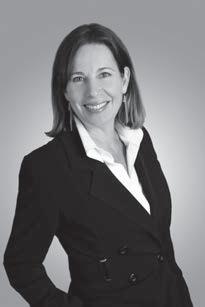
WINE from page 11
the community,” said Healy.
Bryan Harrington, owner of Harrington Wines at 1559 Custer Avenue, makes a wide variety of wines in his Islais Creek warehouse. He started the winery in 2002 to produce Old Vine, organic and sustainably-grown Pinot Noirs. In 2008, he expanded to produce wines from Nebbiolo, Trousseau, Grenache and other grapes.
According to Harrington, Bayview’s and Dogpatch’s proximity to the Bay makes them excellent locations to make wine. “It’s 15 degrees cooler than Sonoma and 20 degrees cooler than Napa. Even without air conditioning, the winery’s mean temperature remains cool throughout the year, so my location is perfect for fermenting and cellaring wine,” said Harrington.
For the last few years Harrington has worked with University of California, Davis scientists to bring hardto-find European grapes to California. “It is a real adventure to roam around Europe discovering delicious, obscure wines, then meet and work with the local growers and bring back cuttings of the vines. After a few years in quarantine at UC Davis, the challenge is to develop sites here in California that can offer the new immigrant vines the perfect combination of climate and soil. The hope is always that these new arrivals will thrive far from their homeland and produce compelling new wines for our local patrons to enjoy,” he said.
Gratta Wines, located on Third Street, launched in 2006. The Bayview winery relies on sustainably grown grapes from old vines planted at Teldeschi Vineyards in Dry Creek Valley. Last year, owner Barbara Gratta opened a wine tasting room in Butchertown Gourmet Marketplace, offering music and food from local vendors Thursday nights. “In Italian, Gratta means “from scratch,”” said Gratta. “Our wines are made with a gentle hand, encouraging the natural
process to evolve. Gratta Wines are produced in the spirit of my grandmother’s philosophy. She would always say...”What recipe? Just do like this.””
Carl Sutton, founder of Sutton Cellars at 601 22nd Street, said he located in Dogpatch because he lived nearby, in Lower Pacific Heights, and wanted to be a part of the neighborhood. “When we moved here a little over six years ago we saw it as a neighborhood that was developing and changing. Third and 22nd was the epicenter of retail in Dogpatch. If we could hang in there a couple of years, we could make it,” said Sutton.
The winery recently opened its rollup door to guests four days a week.
“There’s just that much more traffic in the neighborhood,” said Sutton.
“There is a limited, but almost just right, amount of things to do here. Vermouth is probably our most popular item. It’s very palatable. We also have a dry rosé, a jug blend, and a couple of dessert wines that standout.”
John Fones, co-owner of Cellars 33 at 1225 Minnesota Street, said his winery focuses primarily on Pinot Noir, Chardonnay, and Old Vine Zinfandel. He welcomes customers who walk into the winery’s tasting room to try out vintages made from grapes from the Russian River Valley and Lodi.
“We sell our wine first to members of our mailing list,” said Fones. “If there’s anything left I have a broker who sells to San Francisco and Los Angeles restaurants and wine shops. Our wines have a little bit of a lighter style, but they’re high on flavor. We try and make the wine affordable, but nice and high quality.”
Joel Creager, direct to consumer and hospitality manager at Dogpatch Wineworks (DPWW) at 2455 Third Street, said his business offers event space, private barrel and custom crush service, and about 13 different wines that customers can sample in the tasting room. “We have our own label, although currently our produc-
WINE page 20


We are happy to announce the winners of our email sign-up contest from last month. They will be getting an email!!
The winner of the $150 Flora Grubb Gift Certificate is Arleigh N.
The winner of the $150 Bay Natives Gift Certificate is Cindy J.
Thank you to everyone for taking an active interest in the development and maintenance of greenspace in your neighborhood.
In case you missed last month’s issue, our big news is that we have completed our search for an Executive Director and we are thrilled to announce that Julie Christensen will be filling these shoes.
We’re so excited to work with Julie and are already busy with plans to keep improving the spaces in our district. Visit our website and see what we are up to!
Sign up for our newsletter and stay informed of our latest goings on.


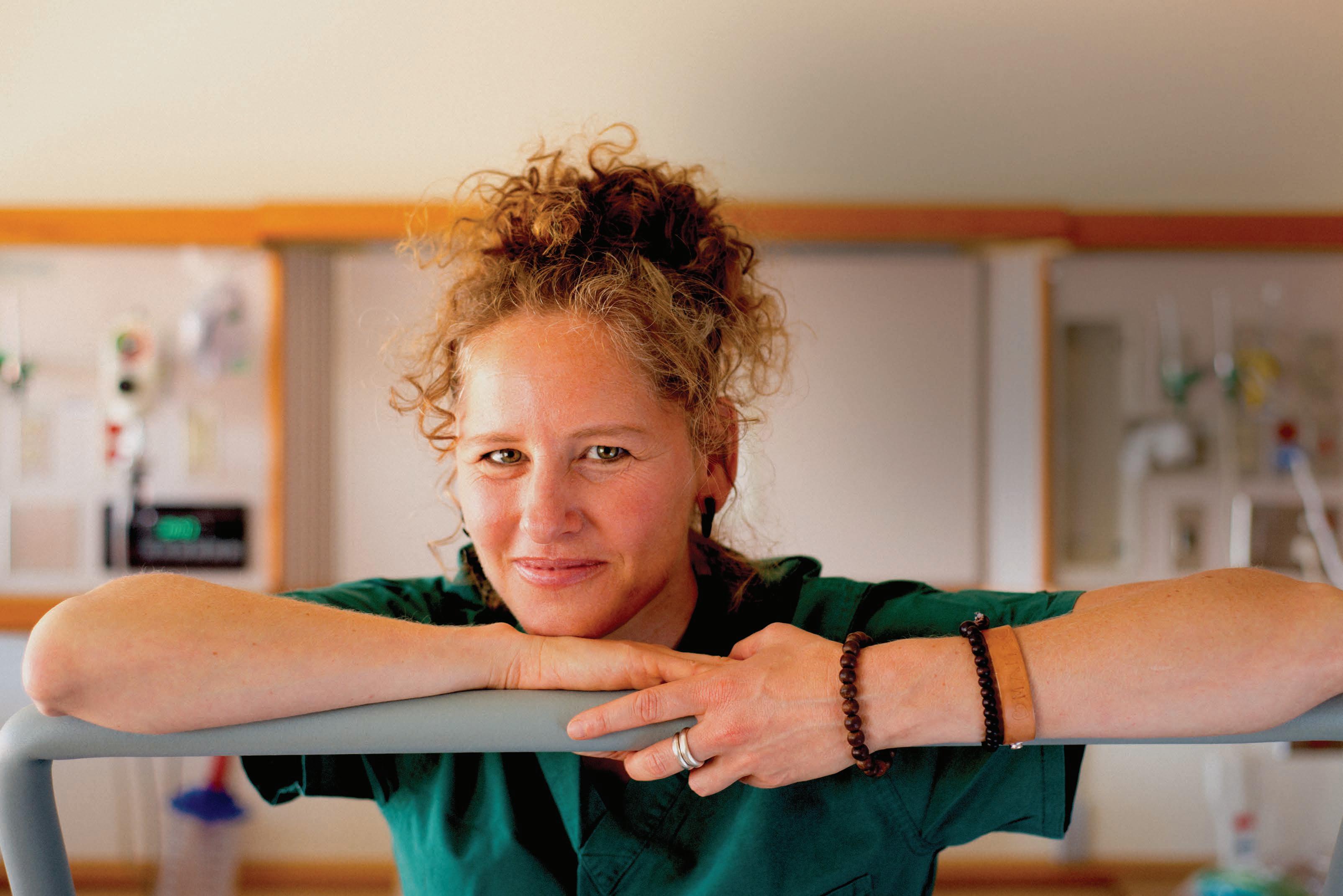


Potrero Dogpatch Merchant’s Association meets the second Tuesday of each month at 10 a.m. at Goat Hill Pizza, corner of Connecticut and 18th streets. Website: www.potrerodogpatch.com. Call 415.341.8949. Next meeting: August 9th.
Starr King Open Space meets for monthly Stewardship Day the second Saturday of each month from 9:30 a.m. to 12:30 p.m. at Starr King Open Space, corner of Carolina St. and 23rd St. Come out and meet your neighbors, be a community steward, enjoy the natural grassland habitat, see spectacular views, and celebrate our beautiful neighborhood open space. Everyone is welcome. Find out more at www.starrkingopenspace.org or facebook.com/StarrKingOpenSpace.
SOMA Rotary Club meets the second and fourth Thursday of the month at Mission Rock Resort, 817 Terry Francois Blvd. We meet at 6 p.m. for a mixer and 7 p.m. for a dinner meeting. We provide community service to the Mission Bay, Potrero, and Bayview communities. The focus is on providing services for the under-served of our community. The website is located at: www.meetup.com/Mission-Bay-Rotary-Club. For more information contact Nine at: n.ladow@comcast.net.
Potrero Hill Garden Club usually meets the last Sunday of the month at 11 a.m. for a potluck in a local home or garden. We occasionally visit gardens such as Ruth Bancroft, Yerba Buena, Cornerstone, Filoli, and the rooftop garden at the Fairmont. We discuss gardening appropriate for Potrero Hill’s microclimates, and often have speakers on subjects such as drought, wind, shade, pests, and even flower arranging. Call 415.648.1926 for details.
Dogpatch & Northwest Potrero Hill Green Benefit District meets once each month from 6:30 PM to 8:00 PM in the Tivoli Room at UCSF, 654 Minnesota Street. Our mission is to clean, maintain, enhance, and expand open spaces, parks, plazas, parklets, gardens, sidewalk greening and the public realm in general in the Dogpatch and Northwest Potrero Hill neighborhoods; support community and volunteer efforts; and promote sound ecological practices and green infrastructure with a locally controlled, sustainable and transparent funding structure. Next meeting is August 17th. Visit our website to see what we are working on near you! http://www.dnwph-gbd.org/
For a $120 annual fee your organization can be listed in Getting Involved. Contact advertising@potreroview.net

Workshop collaborates with artists in designing functional, practical crafts, which have included dog toys, doorstops, and clothing. Among the most unusual are items made of mushrooms grown into the desired shape, such as plant holders and even a chair. The Workshop also partners artists in residence with local artisans to complete projects. Like the Museum of Craft and Design, the Workshop’s creative manager, Lisa Ellsworth, indicated that Dogpatch is a good fit for the institution, having traditionally been a manufacturing base.
Art has been a part of the newlydesignated DoReMi since the Hill attracted artists fleeing North Beach’s high rents in the 1950s. One stalwart, the San Francisco Center for the Book, is celebrating its 20th year at 375 Rhode Island Street. The center, modeled after similar ones in New York City and Minneapolis, promotes both traditional and experimental book forms, and offers 400 workshops annually in letterpress printing, calligraphy and bookbinding. Its
WINE from page 18
tion is very small,” said Creager. “We sell most of our wine through events. We do blending parties, where each person creates a little blend and tries that of the others. We also do comparative tastings of wine out of the barrel with finished wines, among other fun activities.”
Creager said DPWW sources grapes from Sonoma, Napa, Santa Barbara, Santa Cruz, Amador, and Mendocino counties. “We typically have about 30 different winemakers,” he said. “The energy in this neighborhood is incredible. Dogpatch is really changing a lot.”
Nikolas Eristavi, winemaker at The Eristavi Winery at 1300 Potrero Avenue, said his family’s Georgianstyle wines have made a big impression on the many customers who have stopped by the tasting room. “Everyone is your friend if you’re making wine,” said Eristavi. “We put a lot of passion into our wine. We’re very involved.”
Making wine Georgian-style involves keeping the skins on the grapes as long as possible, particularly for
exhibits challenge conventional ideas about what a book is, and can be experienced while hearing the sounds of students working with the adjacent printing presses. It’s an old world atmosphere, utilizing technology that was developed more than 600 years ago, dating back to Johannes Gutenberg. The end result can be a handcrafted elegance that can’t be achieved with a few clicks of a mouse and a modern printer.
A few blocks away is the Wattis Institute of the Arts, part of the California College of the Arts. Founded in 1998, Wattis moved in 2013 from Eighth Street to 360 Kansas, a building renovated by Mark Jensen, who designed SFMOMA’s rooftop sculpture garden. The 5,000-square foot exhibition space shows work from contemporary artists from around the globe, often in solo shows.
One of the oldest artisan businesses in DoReMi can be found at 1001 Tennessee Street, where Ampersand International Arts hosts conceptual and commercial art in a variety of mediums, including pencil drawings,
ART DISTRICT page 21
reds. “Our most popular vintages are Merlot and Zinfandel,” said Eristavi. “We source our own grapes from different parts of California. The Merlot grapes from Lodi, the Zinfandel grapes from the Alexander Valley and the Russian River Valley, and the Syrah from Amador County.”
“We started originally on Treasure Island in 2006,” Eristavi said. “We learned a lot, being pretty disconnected. Not a lot of people came to stop in. Now, where we’re in Potrero Hill, we get a cross between people who are working at startups and just came here and people who have lived in the Mission and Potrero Hill for generations. It’s fun talking to all these different people.”
Wayne Garcia, owner of Dig Wines at 1005 Minnesota Street, said the small production wine she carries from France and Italy draws customers from around the San Francisco Bay Area. “It’s a destination spot,” said Garcia. “It’s a fairly tiny space and there’s only room for about 200 wines. I go out of my way to find things you won’t find everywhere.”
Garcia holds tastings every Friday and Saturday. He prides himself on
WINE page 23

BARS from page 17
$1 for every pint sold of this specialty beer, made with experimental hops, with lots of aroma and flavor.
Anchor Brewery, on Mariposa Street, began during California’s Gold Rush in 1849. Today, Anchor Brewery’s beers can be found around the country and parts of the world. A recent creation, the Go West! IPA, is a complex blend of four American hops with scents of citrus and pine.
South-of-Market, Local Brewing Company, on Buxome Street, opened in 2015 by Regan Long and Sarah Fenson. The facility specializes in an in-house, custom, 10-barrel system, creating unique microbrew recipes. The brewery features 16 taps and an ever-changing roster of beers, including a 2015 California State Award Winning Bluxome Black Lager.
A regular Local Brewing patron, “JJ”, discovered the establishment by chance one day and now stops by for drinks and conversation about twice per week. “I always feel welcome when I go there,” JJ commented. “What’s really interesting is that the age range is from 22 up to 80. I’ve had some really interesting conversations with a variety of people there. My favorite beer is the Sutro Tower Stout. It’s a dark stout beer with a nice thick coffee taste. That’s my go-to beer.”
Closer to the Bay, 21st Amendment Brewery and Restaurant got its start in 2000 after Nico Freccia and Shaun O’Sullivan, who came from Southern California five years earlier, teamed up. O’Sullivan, a former photographer and paralegal, “Traded his suits for boots and was saved by beer.” Freccia, a writer, actor and avid homebrewer, hatched a plan to start the brewery while taking a brewing science class at the University of California, Davis alongside O’Sullivan.
One of its more recognized beers is the Brew Free! Or Die IPA, which is aromatic, and makes quite an impression at the first sip while leaving a clean finish.
On August 27 Thirsty Bear Brewing Company will celebrate its 1996 opening. Located on Howard Street, the brewery is certified organic, featuring malts and hops that have been grown under organic conditions. Thirsty Bear was founded by Ron Silberstein, a brewmaster who had originally wanted to open a location in Spain. When that plan fell through he started in the City instead. The brewery includes a full restaurant that serves Spanish-inspired cuisine and bar service.
An ultra-laid back, low-key spot for drinks is Bar Basic, on Brannan Street, conveniently located two blocks from Caltrain. The establishment is known for its many televisions airing sporting events, an interactive jukebox called Rockbot, and a Super Nintendo game console for use by patrons. Free food and prizes can be won on Tuesday evenings during trivia night.
“Bar Basic was established in 2010 with the goal of creating a comfortable neighborhood atmosphere,” said Mike Limanon, manager and owner. “We have a large selection of whiskey and our cocktail menu focuses on the classics with some slightly modernized variations.”
Gold, Chapter Fourteen
BY STEVEN J. MOSSJordan bounced on his ball chair and hummed to himself as he checked the latest feeds on his iPhone. Sennheiser headphones were clamped over his ears; three silent computer screens were open in front of him, displaying a YouTube video of John Oliver, an image from Minecraft, and a Top Chef episode.
“I’m paying you to do what, exactly” grimaced Stan, as he walked into Jordan’s work space.
Jordan, seeing Stan’s image reflected in the Minecraft screen, held up his hand. “Uno momento, por favor, Senor El Jefa.”
“What, so you can finish your ebinging?” retorted Stan. “You know, attention span isn’t the name of a bridge. You’re here to work, not…”
Jordan bounced hard, spun around clumsily to face Stan, and took off his headphones. “What’d you say? I was too busying keeping up on the latest in politics and cooking. You know, there’s some pretty interesting similarities between the two: cutting stuff down to size, mixing things up, turning on the heat, making fundamentally unpleasant things seem tasty, like taxes and intestines…”
“Whatever,” Stan sighed. “Have you found anything?”
“Well,” Jordan said, “I filtered the feed to try to strain out as much of the not useful bits as possible, focusing on picking up words like “property,” “land,” and “Potrero Hill.” But, other than “Potrero Hill,” which never comes up, seems like every single meeting the mayor has is about property or land. Or sometimes homelessness, but mostly related to people being on someone’s land or property. Geez, that guy doesn’t know what to do about that mess. You’d think it’d be pretty straightforward: give the
ART DISTRICT from page 20
landscape paintings, and sculpture derived from sources as diverse as rusted copper or commercial furniture. Ampersand opened its gallery in 1999; the building previously housed a custom drapery business, owned by the grandmother of gallery owner Theodora Mauro. The fact that the Mauros own the property allows them a reprieve from the rental market. Due to the live/work zoning restrictions, however, the gallery’s hours are limited. Visitors who stand at the front door are likely to encounter a small dog, Yoko, to announce their presence.
Another veteran neighborhood gallery, the Romer Young Gallery, is tucked away at 1240 22nd Street. Romer Young features mid-career, national and international artists that challenge the observer through visual, performance art and large instillations.
Running through August is a pop-up gallery, B.A.D. Space, on 2360 Third Street, which features fine fabrics by Norwegian artist Pia MYrvoLD, primarily clothing, pillows, carpets and ottomans.
person shitting in the street a place to shit. Any who, it’s not like listening to episodes of West Wing; more like Squidbillies mixed with the morning traffic report, which is why I need to rely on other entertainment to keep the ol’ mind in shape…”
“Uh huh,” said Stan. “So, nothing.”
“Well, that what I thought. Until I contacted Snappydog.”
“Snappydog?”
“Code word for the mayor’s, um, is “Butt boy” an official title? Anyways, he knows who the mayor is meeting with; he gave me the time stamp, so to speak, which narrowed the times when I had to listen in.”
“Okay, so…” Stan said, exasperated.
“It’s a rich guy. He wants the land.” Jordan spun back to the screen that was streaming Top Chef and started rapidly tapping. “The people in the meeting didn’t say who it was, but I put together the clues – a billionaire who wants to move from New York, high-maintenance, possibly Trophy Wife, maybe an interest in architecture – and came up with a few possibilities.”
An image of Donald Trump flashed on the screen, followed by Jay Z, then Michael Bloomberg. “I think it’s this guy.”
Stan leaned toward the computer, which showed a dark-haired, deeply tanned man in his 60s. “Who is he?”
“Roman Perlman,” said Jordan, tapping at the keys. “Married to this woman.” A photograph of a slender woman in her 40s riding a horse came up, followed by one of the same woman in a complicated bikini.
“How’d he make his money?”
“It was her money. She started Body Beautiful, a natural cosmetics company – which I think means everything’s sourced from a rainforest directly to your face; tiny Amazon monkeys that come in a reusable package crawl around popping blackheads, that kind of thing – and sold it for a couple hundred million before she turned 30. By the way, I’ll be 30 in four years, and expect to cash out of here in a big way before then…”
“So you’ve made clear,” Stan said. “What else?”
“He took her money and multiplied it by starting a company that
made laser-guided pistols and automatic weapons, initially for military purposes but then also geared toward the consumer market, which went crazy after 9/11. There’s some great photos of what these weapons of messy destruction can do to a body.”
A photo flashed on the screen of a corpse with a six-inch hole in the torso. Stan winced. “From body beautiful to whoa!” said Jordan. “Don’t think any amount of organic makeup is going to make that right. Now they’re investing in cannabis.”
“Medical marijuana?”
“Marijuana everything, medical, growing it, distributing it, distilling it. They named their company “Bud Beautiful.”
“So we’re going up against a guns and drug company. Awesome,” said Stan.
“Fellow drug company,” said Jordan. “Maybe we have something in common.”
“Yeah, maybe,” said Stan. “What’s the mayor think about them?”
“Pretty, pretty, pretty closed lipped,” Jordan replied. “Need to know basis, or maybe he doesn’t know himself. He’s not exactly a decider type.”
“Okay. Send me the file on them.”
“Right-e-o,” replied Jordan, tapping at two different keyboards simultaneously. Silicon Valley appeared on one screen; Bojack Horseman on another. “Oh, by the way, the guy is maybe dangerous.”
“Dangerous? What do you mean, dangerous.”
“His first wife, who was rich but not richy-rich, disappeared. Drowned, while they were sailing in the Bahamas. Nothing was ever proven, but she was a good swimmer; her family suspected foul play. Some investigations ensued, nothing ever proven, yada, yada, yada…Foul play, is that a few chickens playing Cards Against Humanity?”
“What? Okay, thanks. Send me the info.”
“Already done,” bounced Jordan, who’d put back on his headphones.
Each month the View publishes a chapter from Gold , a serialized tale of politics, capitalism, and corruption in San Francisco. Previous chapters can be found on the paper’s website, www.potreroview.net.

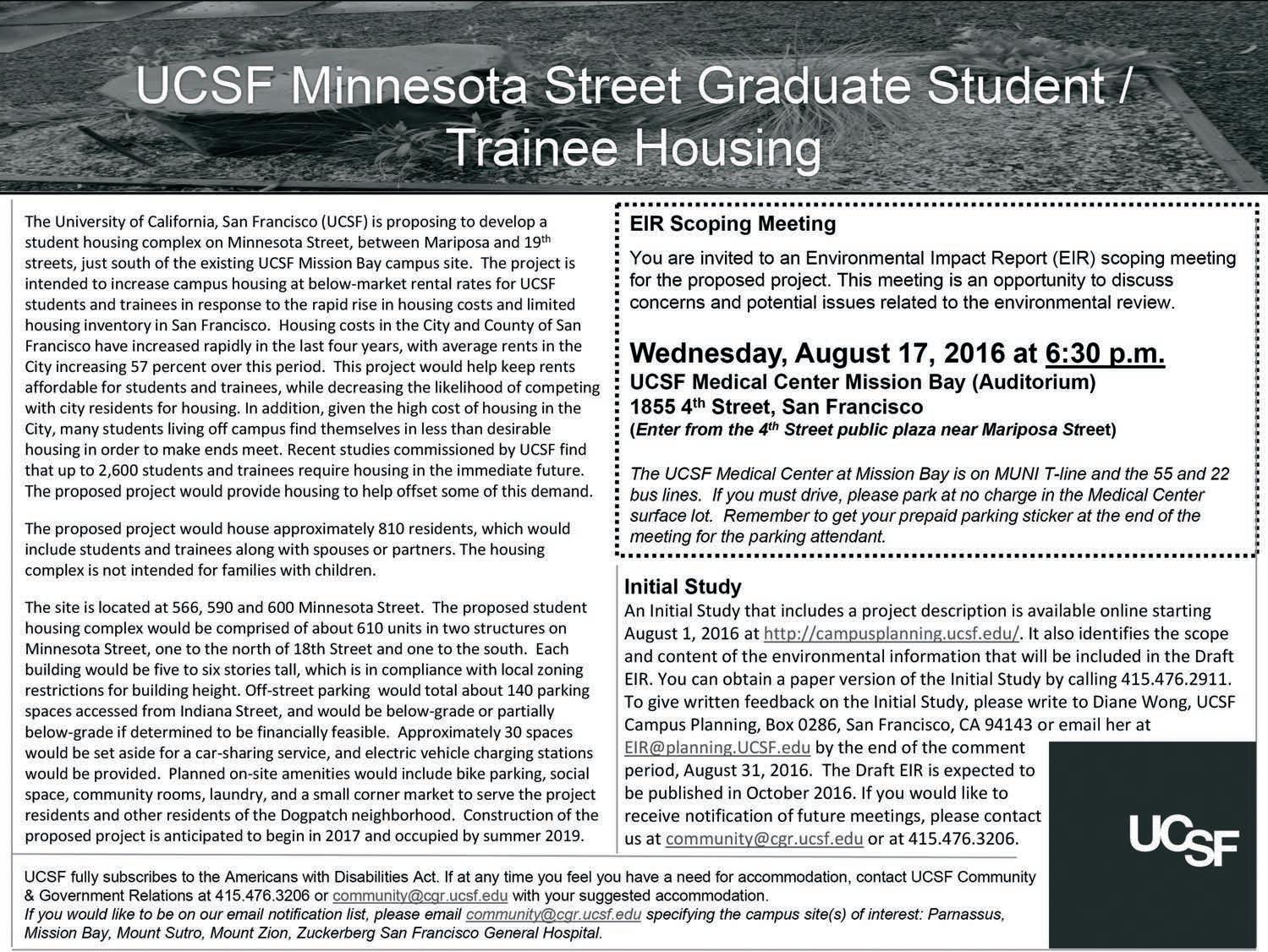
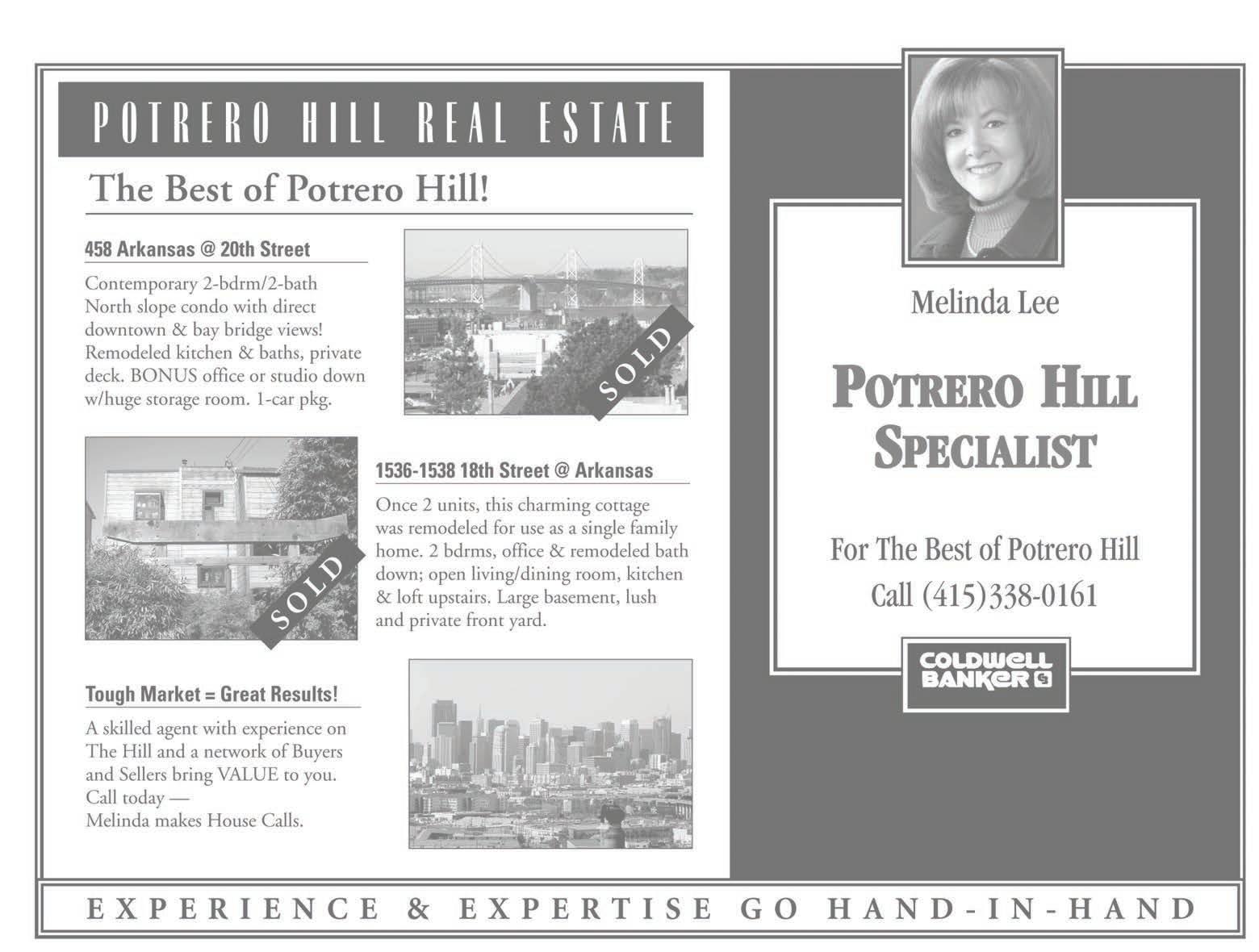
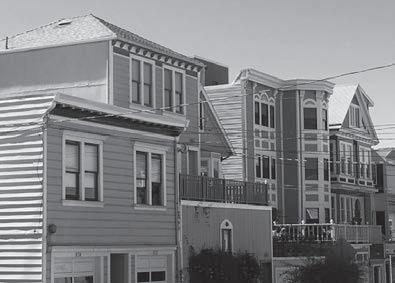
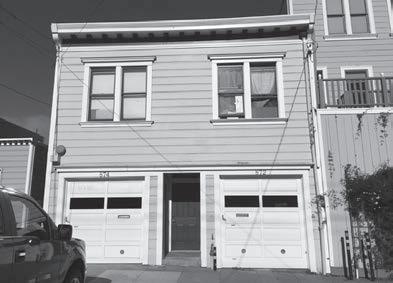




Housekeeping
CLEANING PROFESSIONAL 28 years experience. Apartments, homes or offices and apartment buildings. Roger Miller 415-794-4411 References upon request.
Photography Consultant
Experienced photo technician, specializing in in-home/studio archiving and file management. Call 826.266.7587, for Sam.
Computers
COMPUTER PROBLEMS DRIVING
YOU BUGGY? Personal IT consulting for small businesses & busy professionals. Problems fixed! 30+ years experience. I can install & troubleshoot as well as shop for computers/networks/printers. If you’re not technical, don’t worry – I am. Rob 415.935.3305. rob@sfcomputech.com

ERISTAVI from page 11
Nation Educational, Scientific, and Cultural Organization recognized the country’s nearly 8,000 year history of winemaking by adding Georgian winemaking to its Intangible Cultural Heritage list. It’s this history the Eristavi’s want to draw upon as part of their entry into the competitive world of winemaking, hoping to marry their heritage to the aesthetics and terroir of their adopted home.
Victor recently special-ordered clay vessels, amphora, which closely resemble traditional containers used in
Georgia, from a winemaker in Oregon who has been experimenting with them. He plans to start vinifying wine in the vessels next year.
Eristavi offers visitors $10 wine tastings, as well as cheese and charcuterie pairings. Lia and Victor are behind the bar Tuesday through Friday 5 to 8 p.m. and Saturdays and Sundays 1 to 5 p.m. A wine club is on offer, in which bottles are distributed quarterly, with free tastings anytime, including directly from barrels to provide a preview of the upcoming vintage.
OBITUARY
Saul Bloom died on July 16, 2016. The cause was a brain tumor, a glioblastoma, which Bloom survived for almost two years after he was diagnosed, through rounds of surgery, radiation, and chemotherapy.
Bloom was the founder and executive director of Arc Ecology, an environmental justice nonprofit based in Bayview-Hunters Point. Over the course of thirty years he helped lead efforts to clean-up the Hunters Point Shipyard, and was a relentless advocate for Southside residents.
WINE from page 20
offering hands-on service in an “oldschool kind of place. My job is constantly challenging,” he said. “I look for wines that taste of the regions from where they come. My personal favorite is a Chablis that’s bright, super fresh, and crisp. I jokingly call it my desert island wine. Should I ever be stranded, it will pair perfectly with the seafood I assume will be available there.”
According to Garcia, Dogpatch doesn’t attract as many visitors as the Mission and Hayes Valley. To encourage customers to learn more about wine he recently sold some of his vintages to Michael and Jacky Recchiuti, co-owners of Recchiuti Confections and The Lab. Jacky Recchiuti confirmed that in the past six months she and her husband curated a dinner series, tasteProject, that involved music, art, and six-course meals featuring foods and beverages from Dogpatch, including wines from Dig Wines, meats from Olivier’s Butchery, and cheeses from La Fromagerie.
WHAT DOES WEALTH MEAN TO YOU?
Is it living comfortably? Retiring early? Leaving a legacy through philanthropy, or for your loved ones? It's a big question, but it's at the heart of figuring out what you want from your financial life.
At Umpqua Private Bank, wealth means having the ability to pursue your priorities and the support to explore every option. We're here to help you hone that wide world of potential into concrete and achievable goals—then make those goals a reality.
Stop by, say hi, and learn more today:
POTRERO HILL STORE
415 De Haro Street
San Francisco, CA 415-293-1640
umpquabank.com/potrero
“We would have various themes, like mushrooms for all six of the courses, or glass blowers who came to blow receptacles in between the courses,” said Jacky Recchiuti. “We were as creative as possible.”
According to Recchiuti, one goal of the dinners was to showcase higherend wines to which diners might not have been exposed. Future collaborations between the Recchiutis and Garcia may emerge, and the Recchiutis are contemplating launching a winechocolate pairing event series with DPWW.
“We’ve been in the neighborhood for 20 years,” said Jacky Recchiuti. “It was a wasteland. Now it’s this mecca of businesses, wine producers, wine bars, and wine purveyors. People seem to gravitate here for those kinds of festivities. You could go to any corner and find a new kind of wine to try. It’s bringing a lot of foot traffic to the neighborhood and revitalizing the area.”
